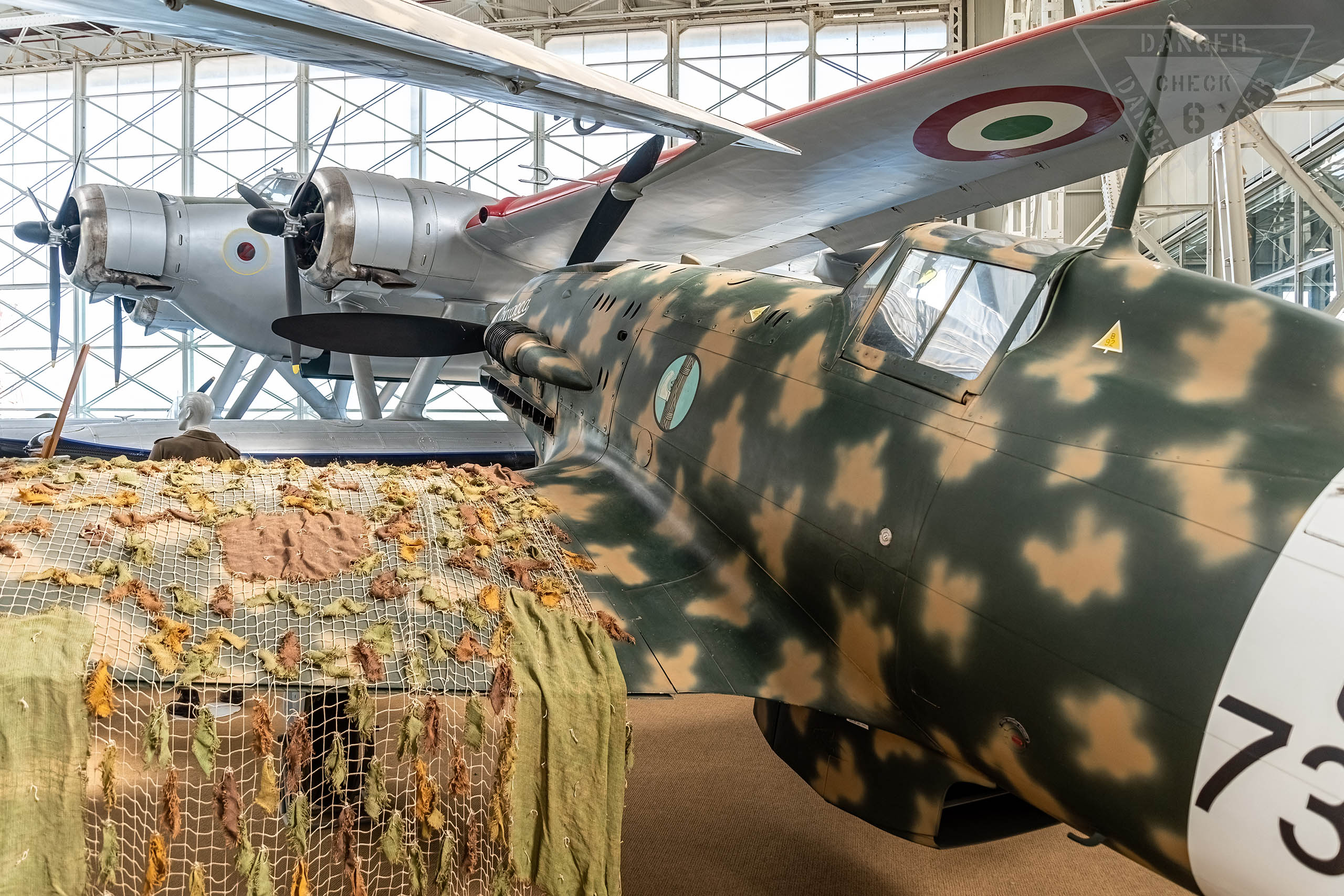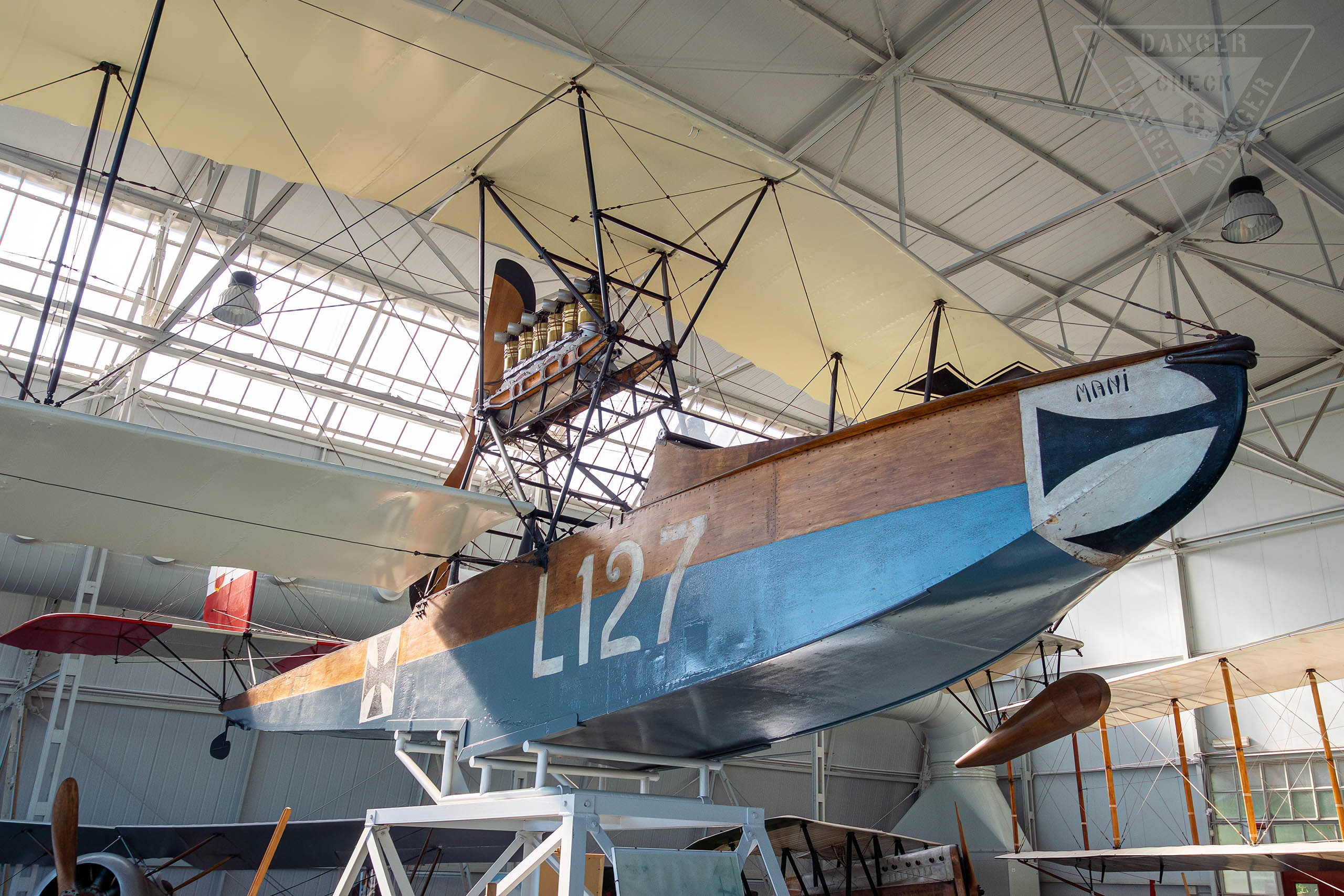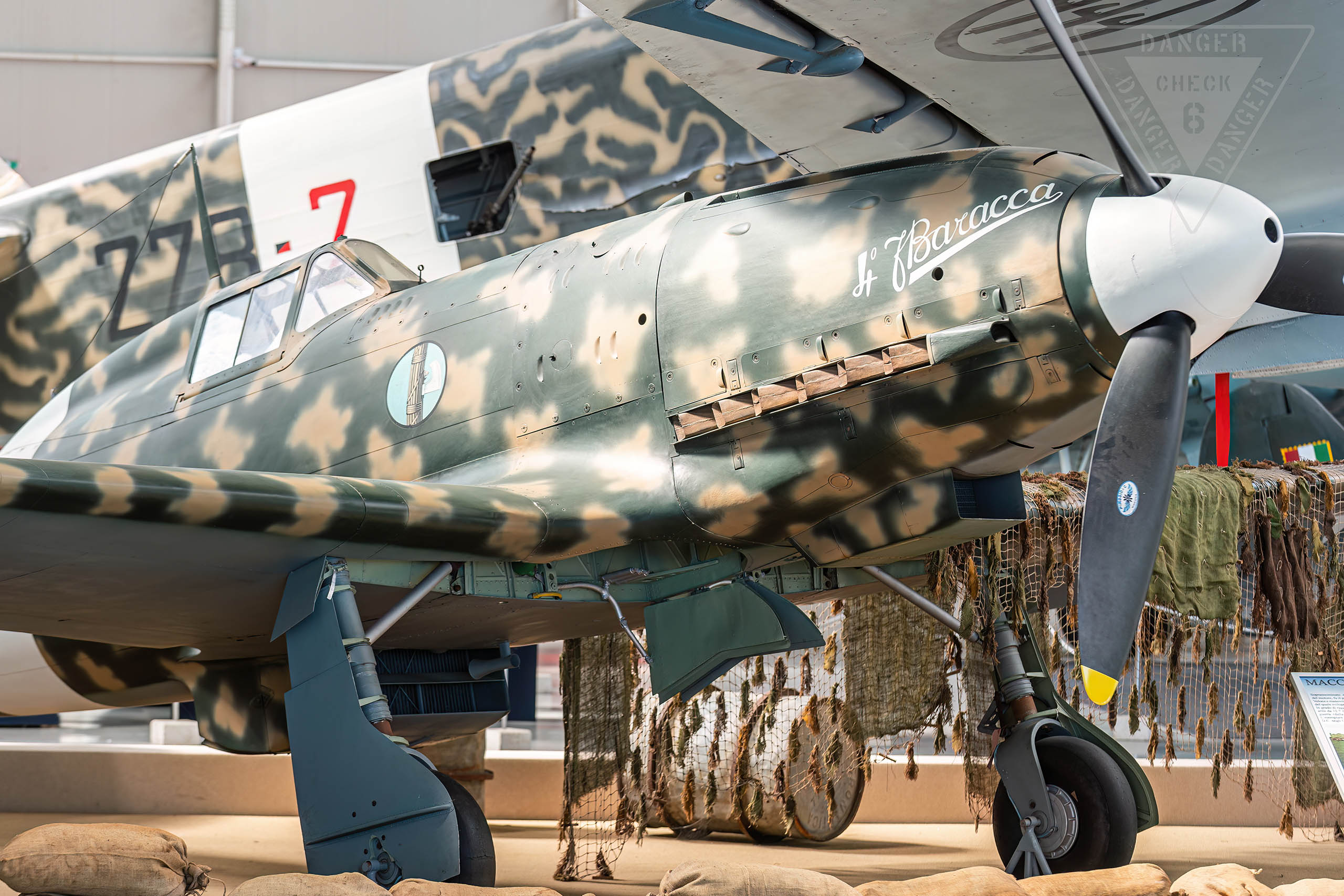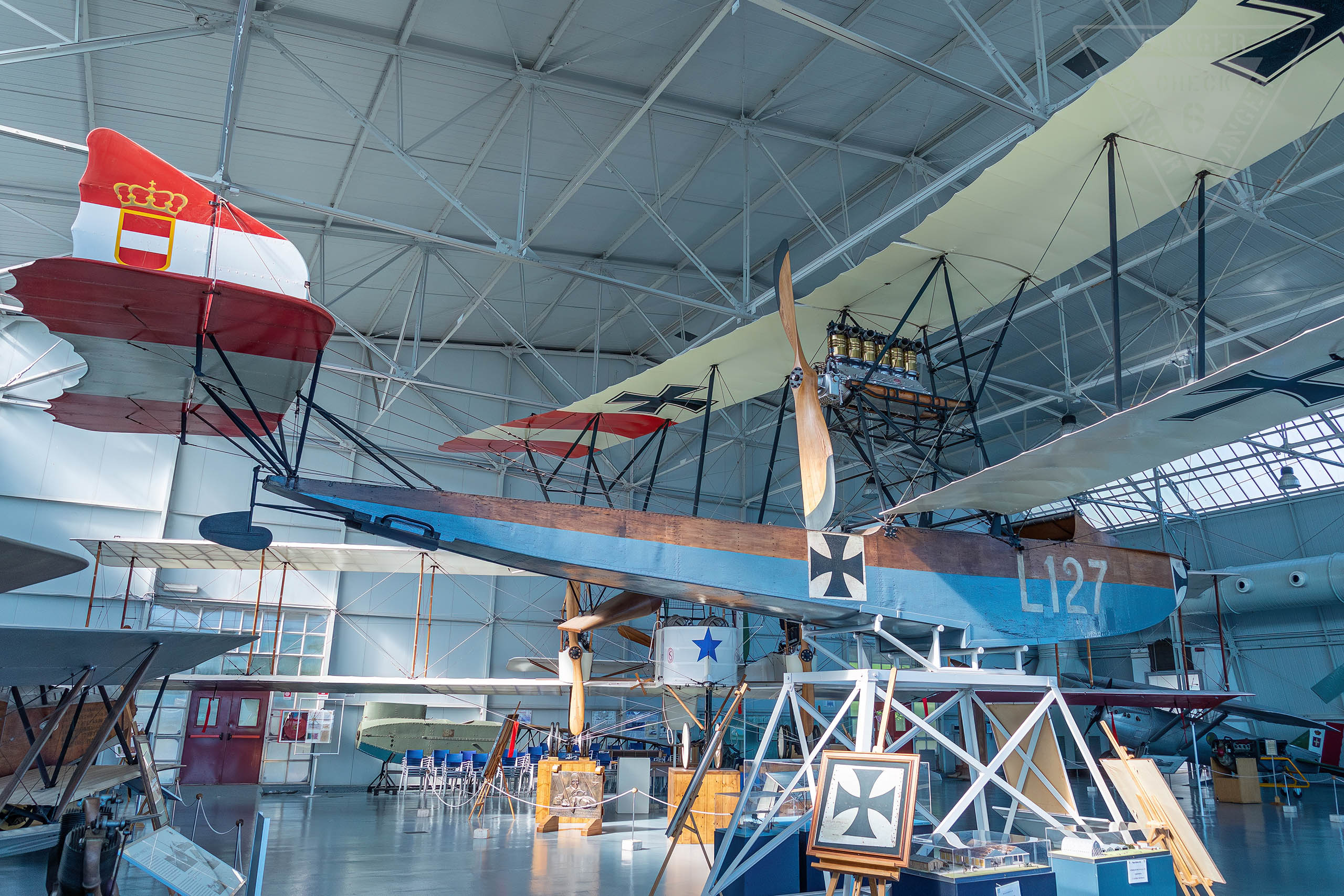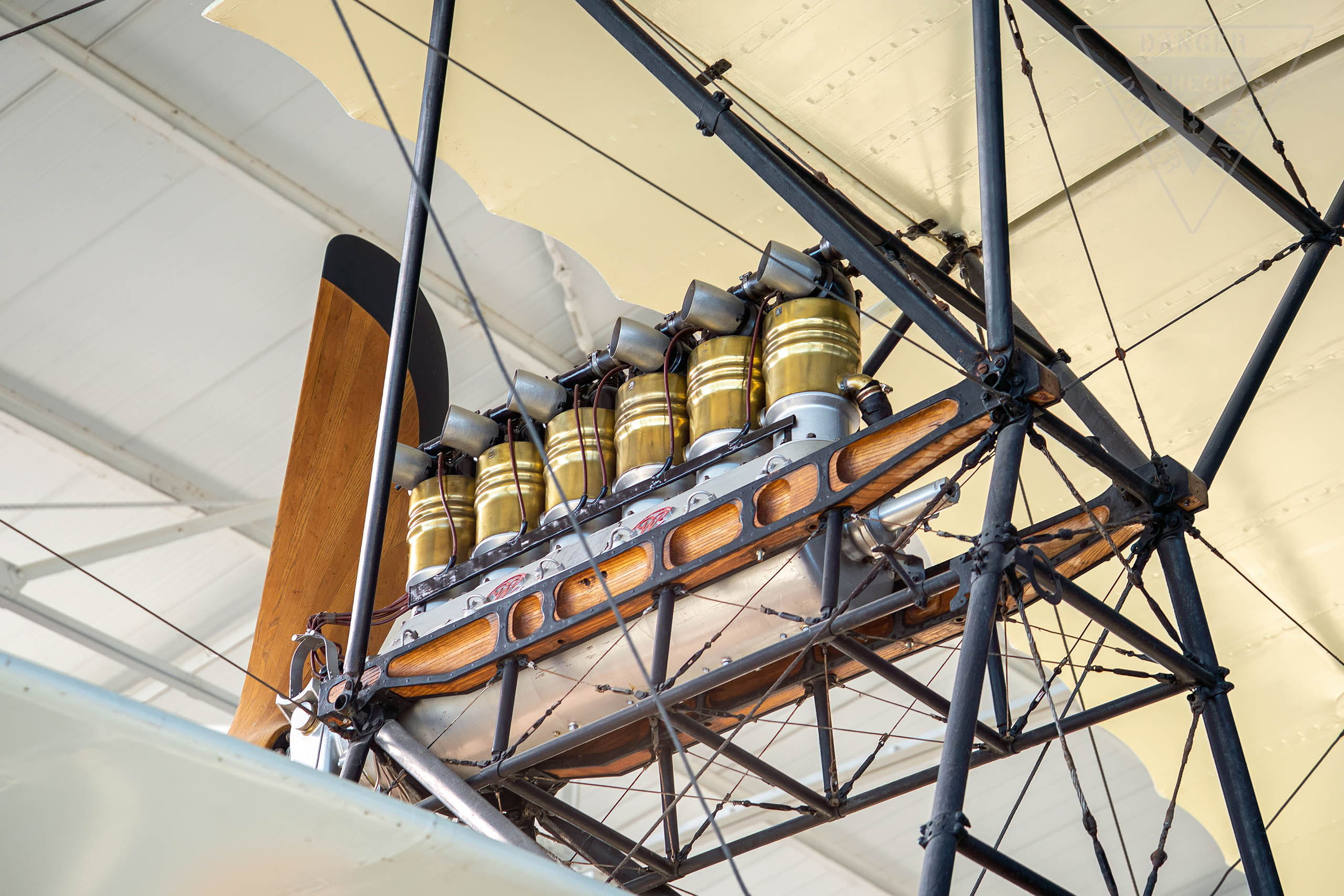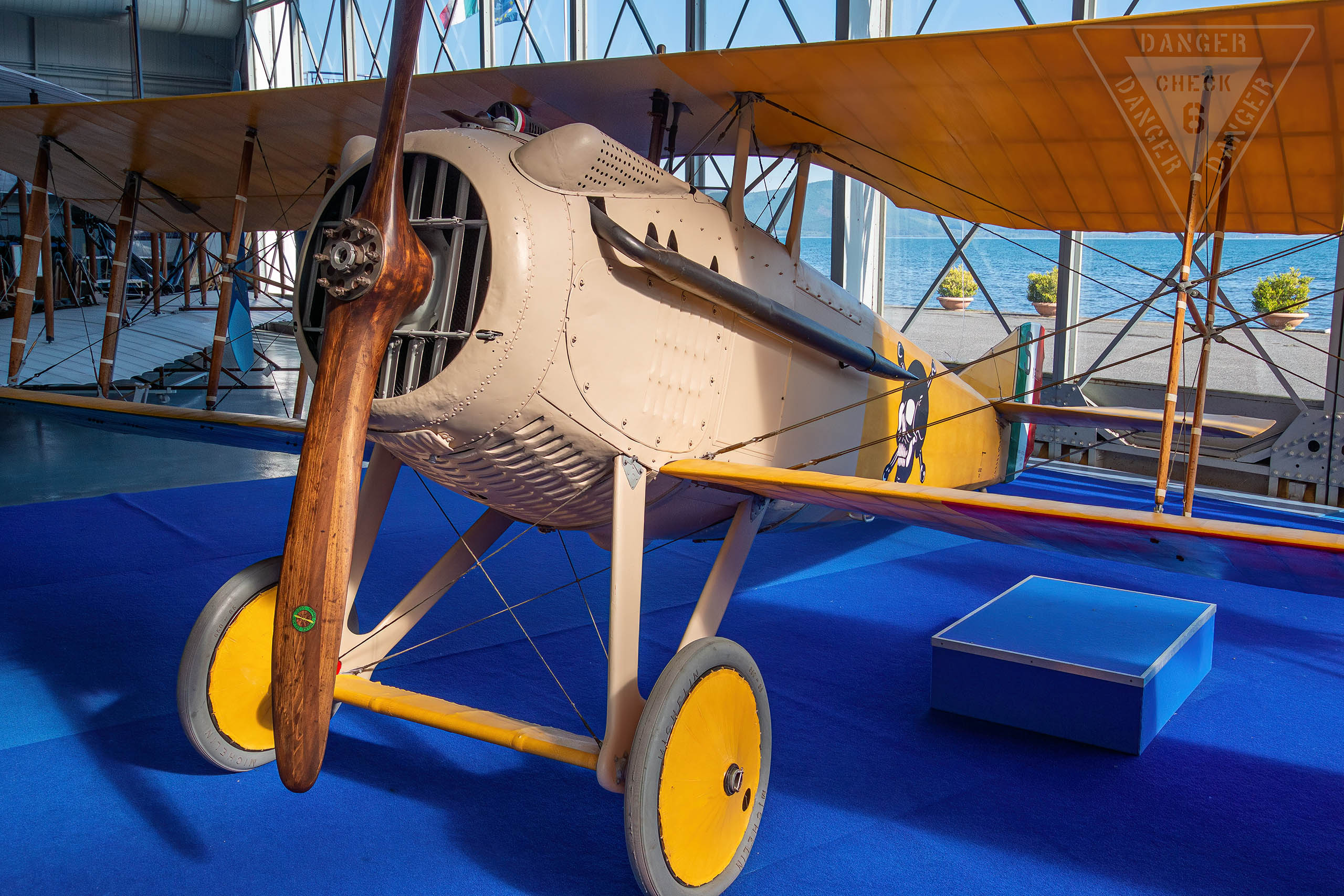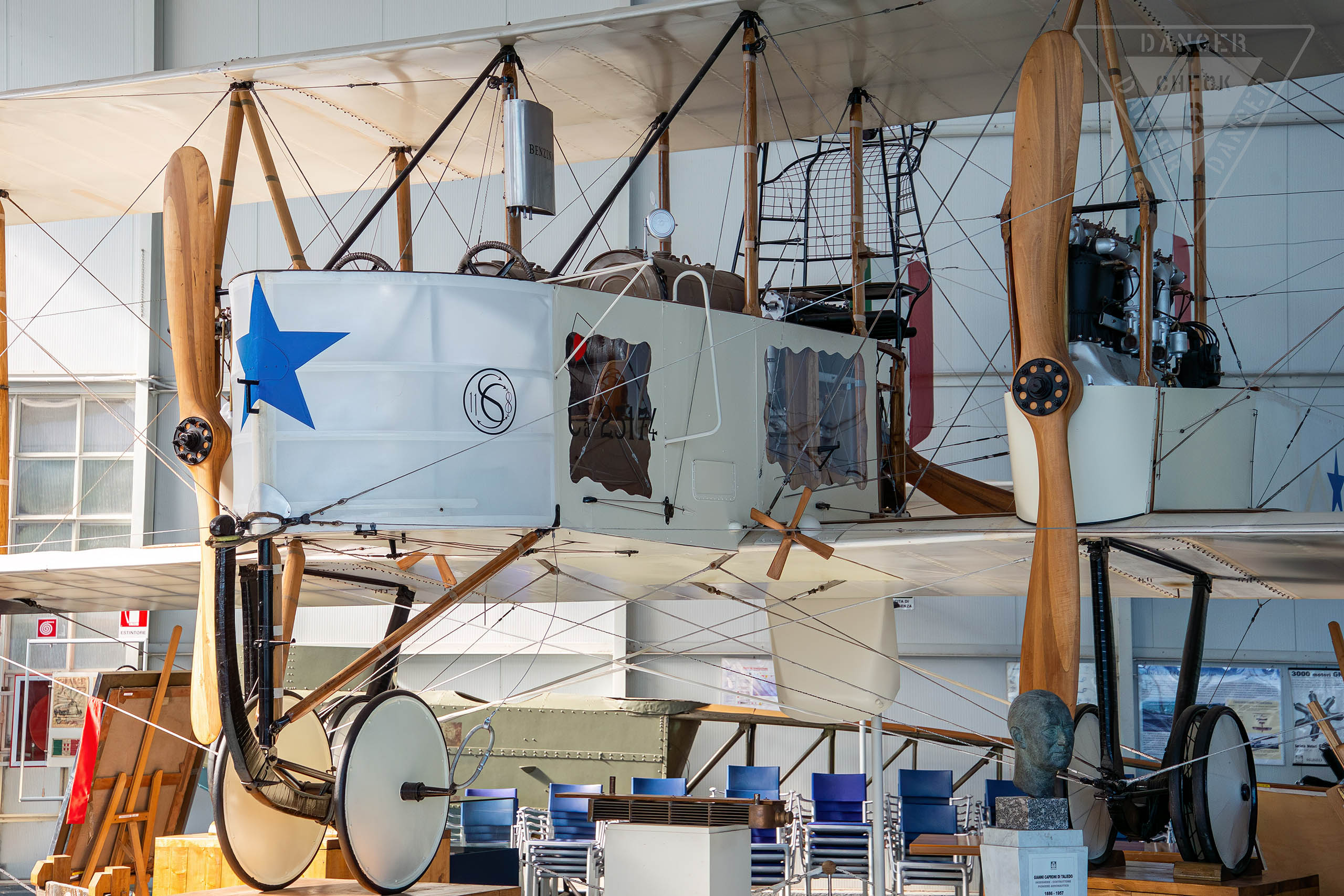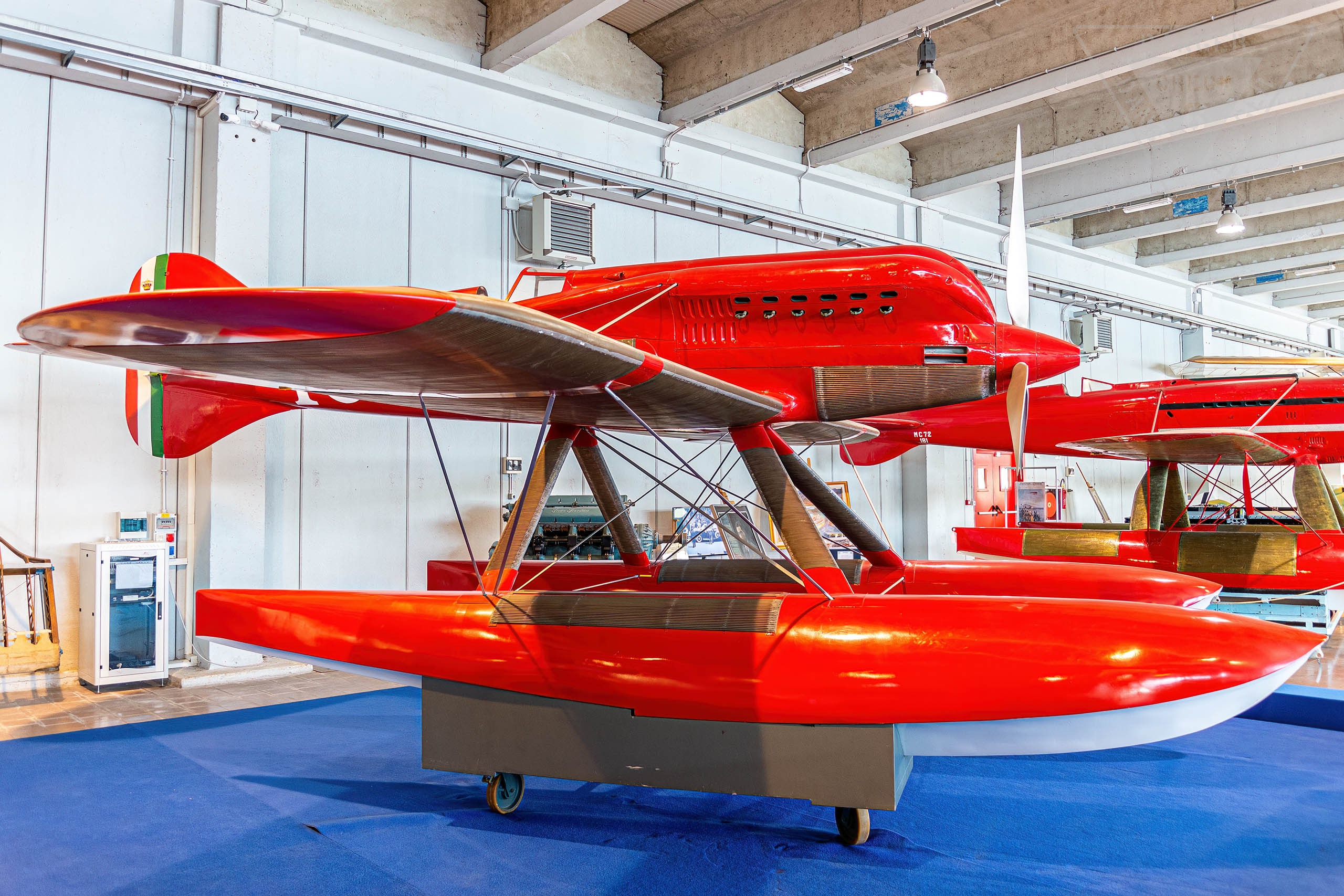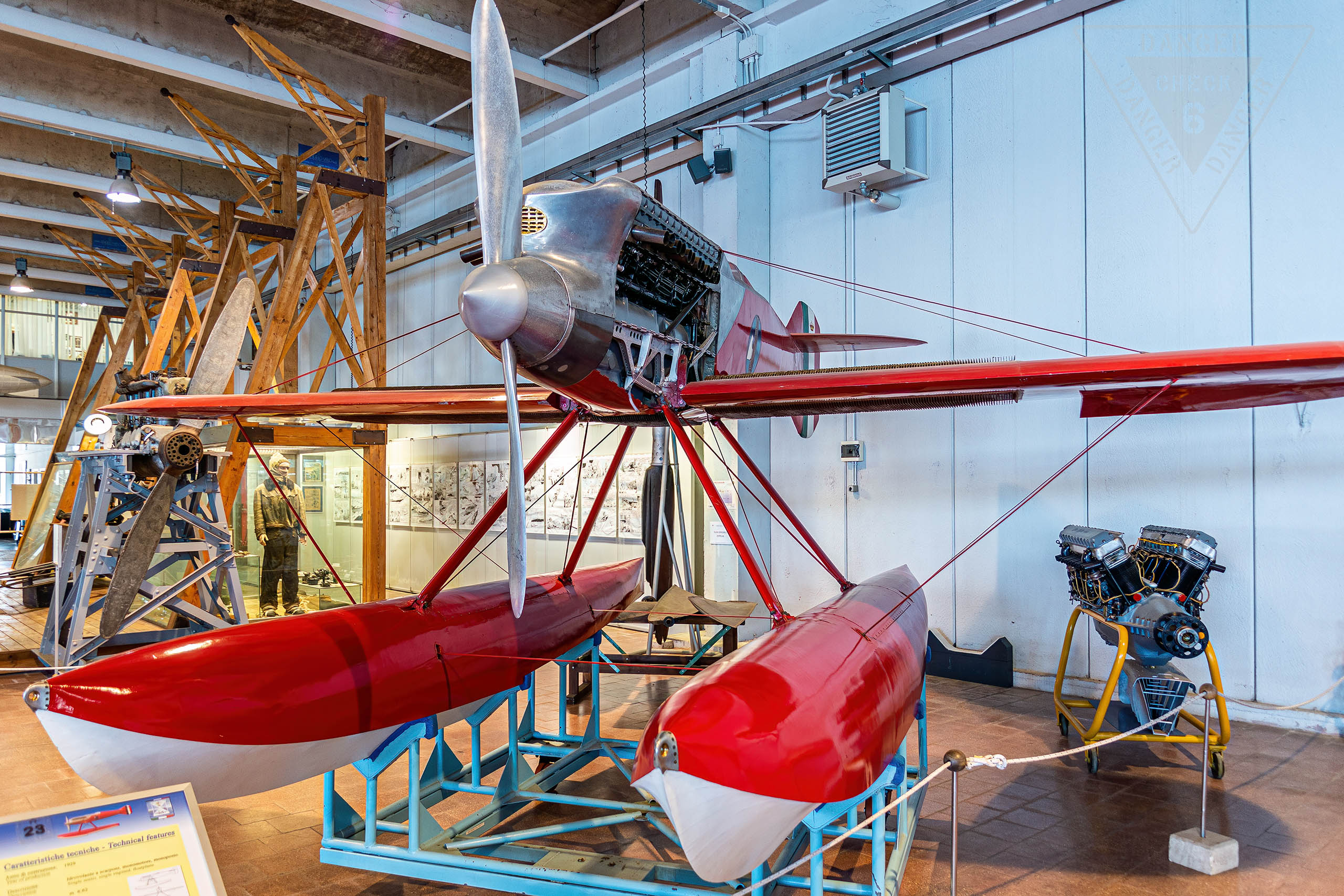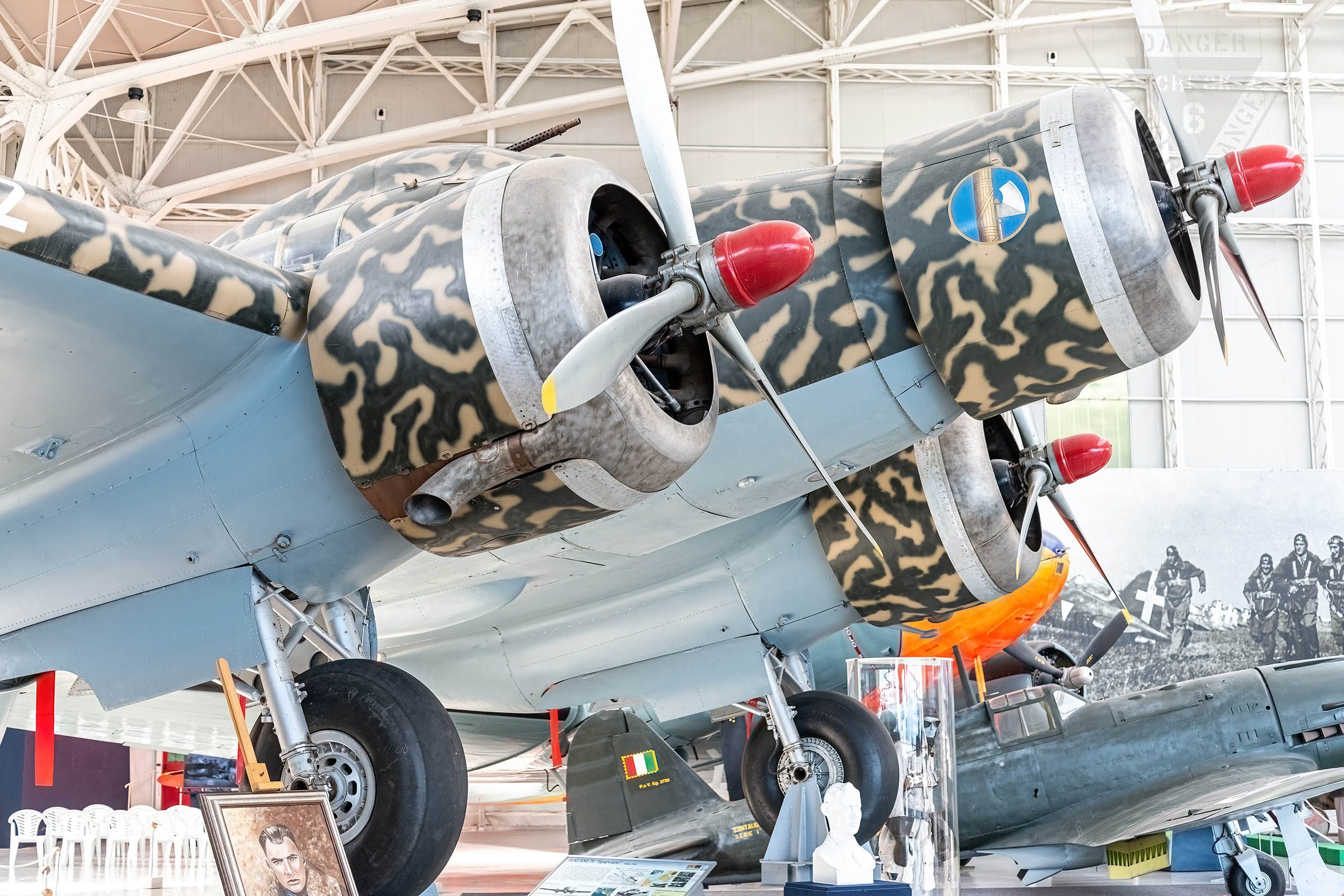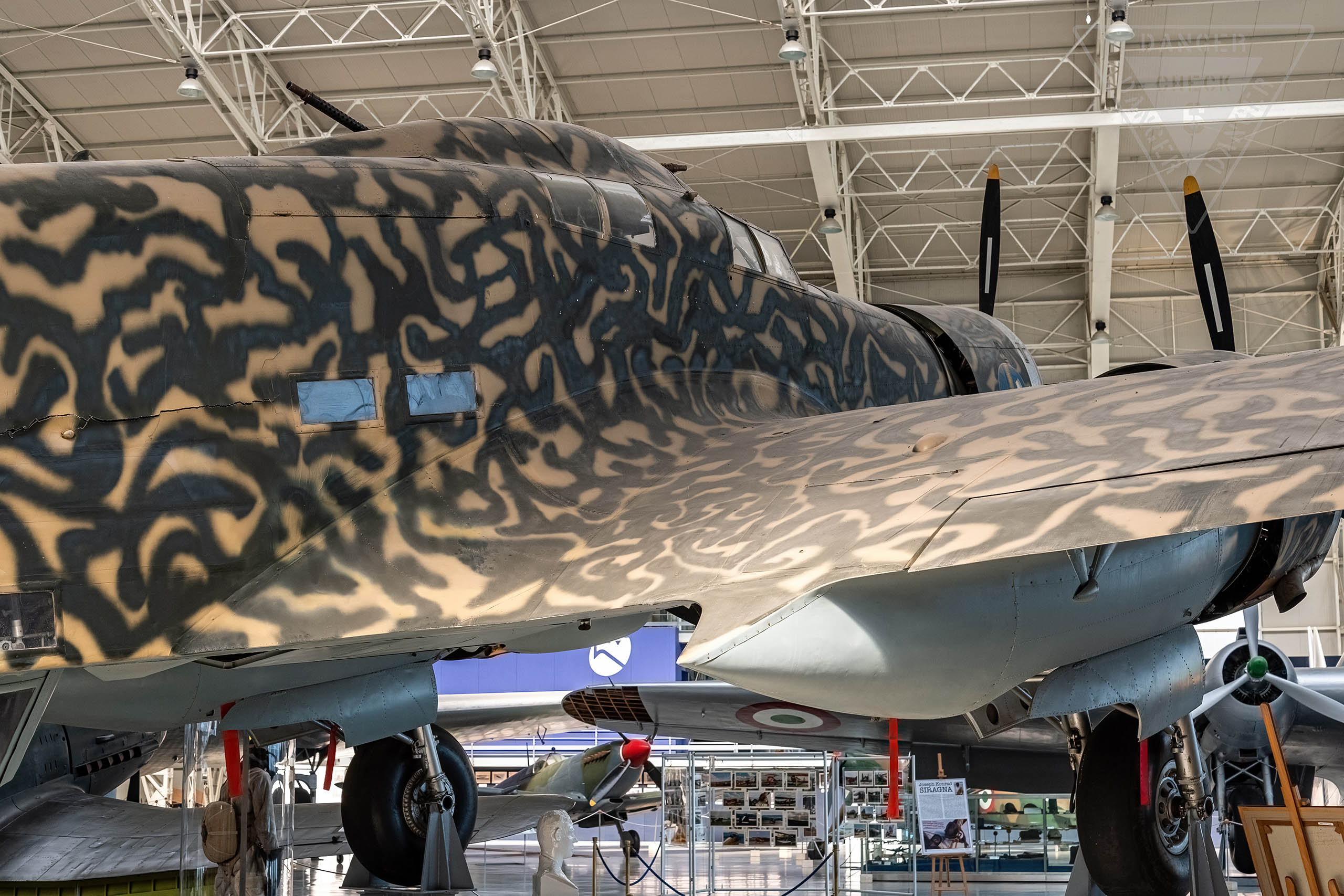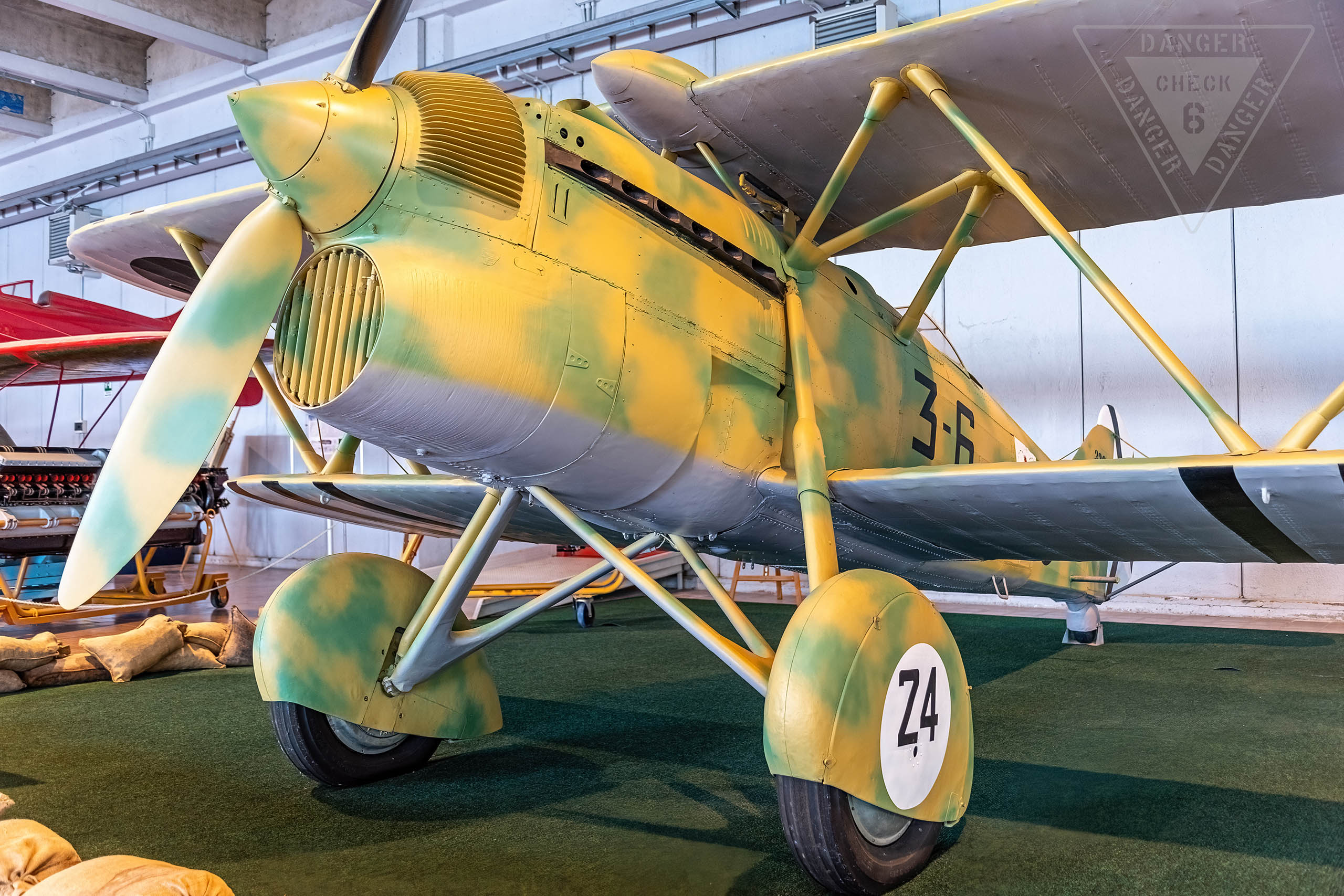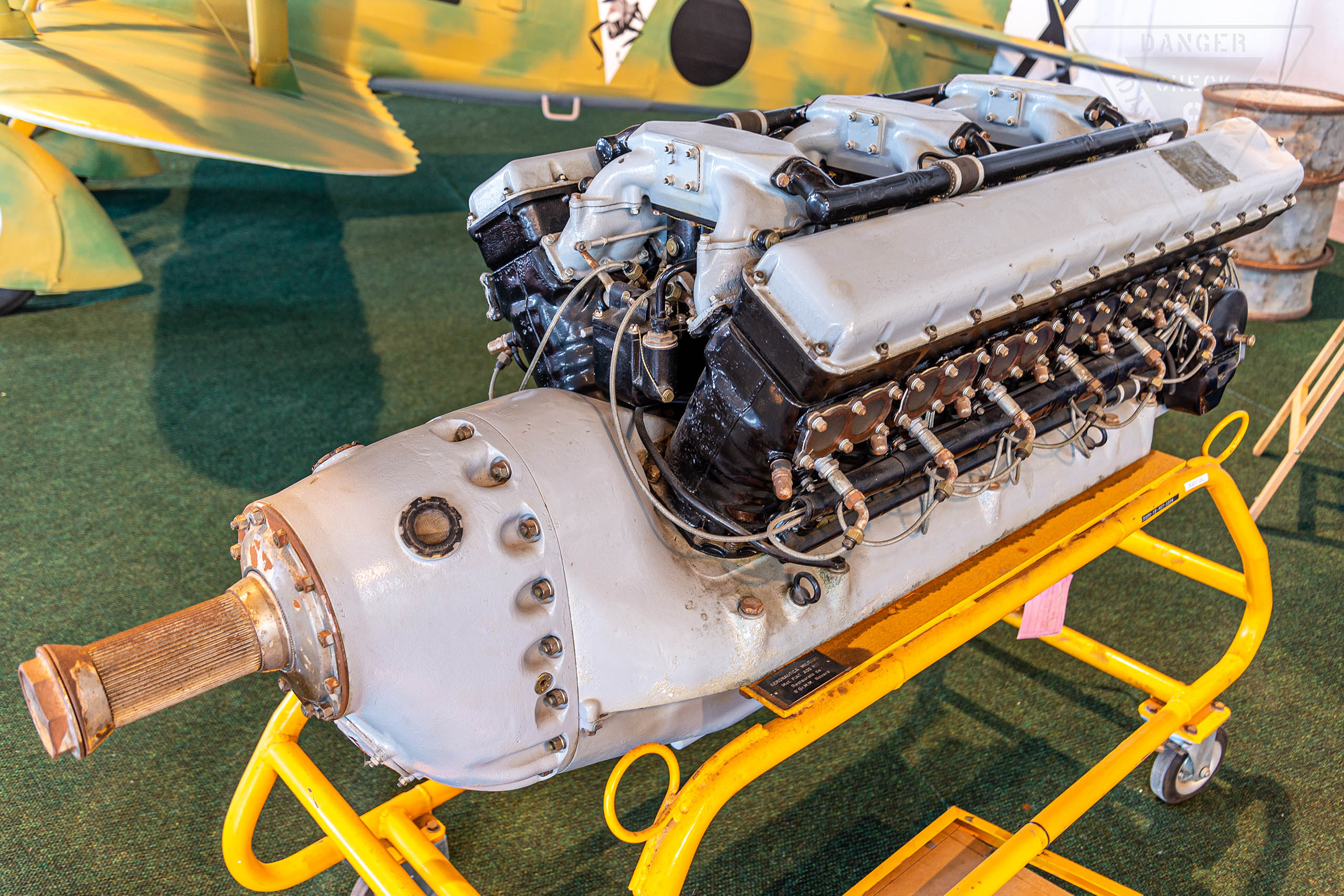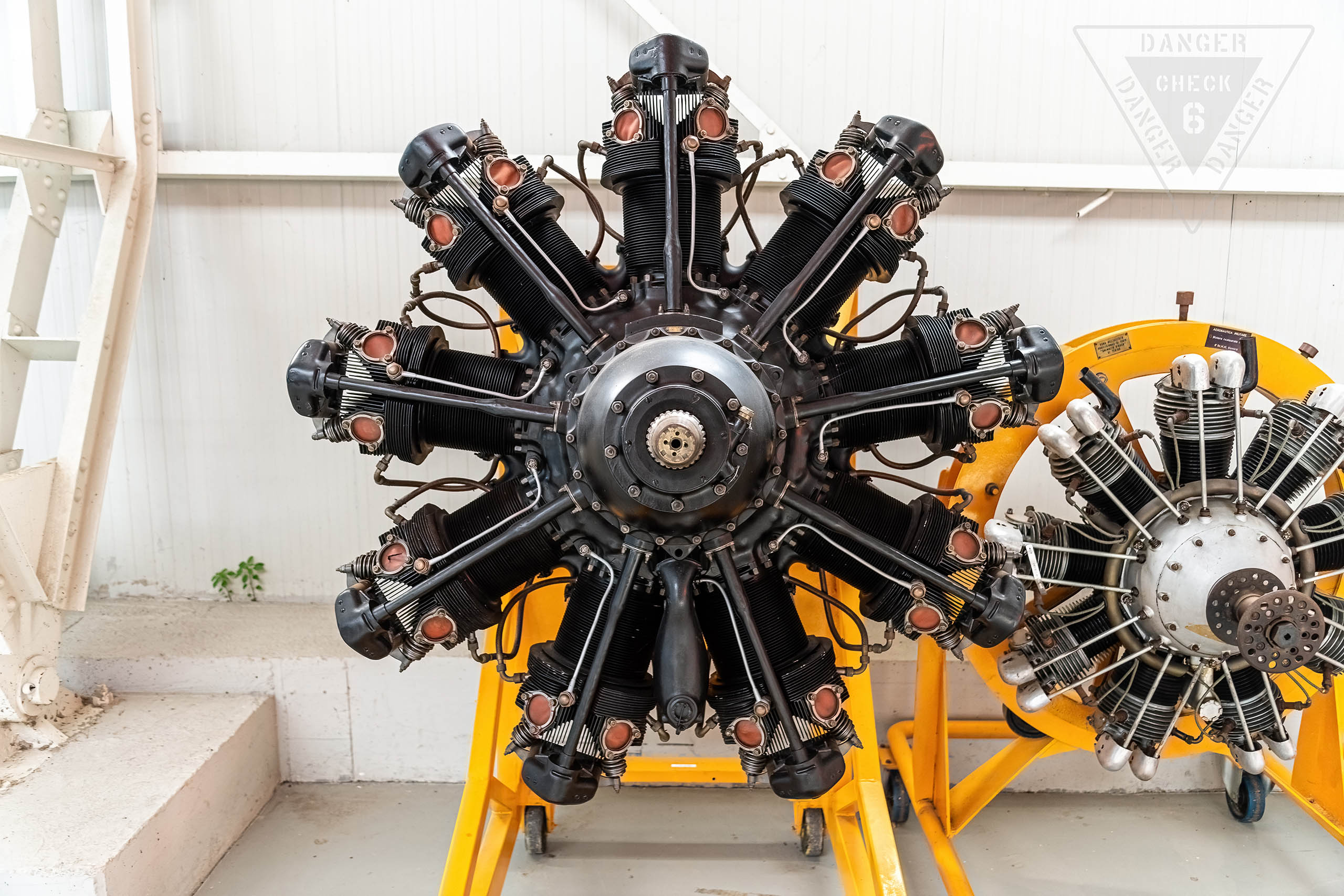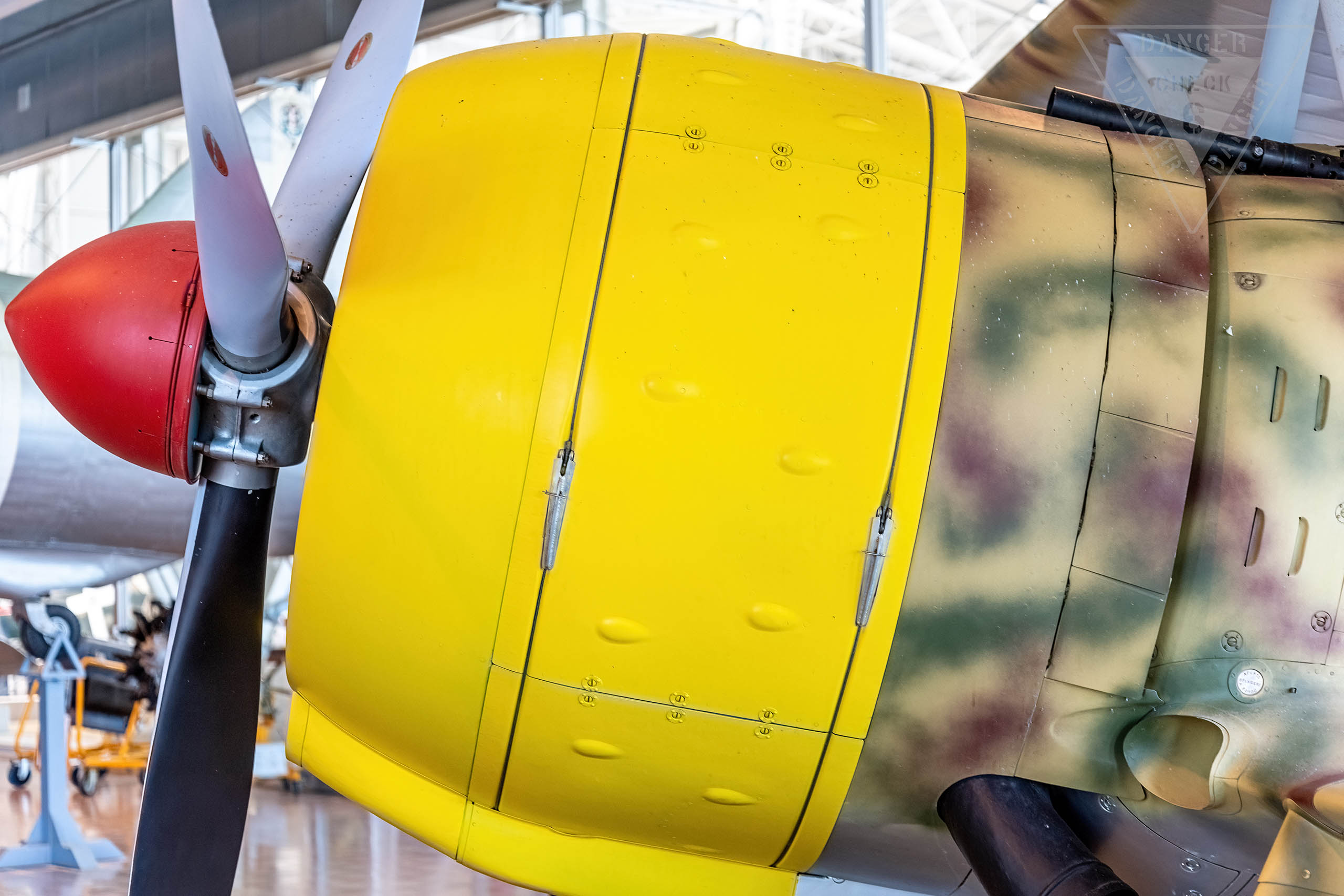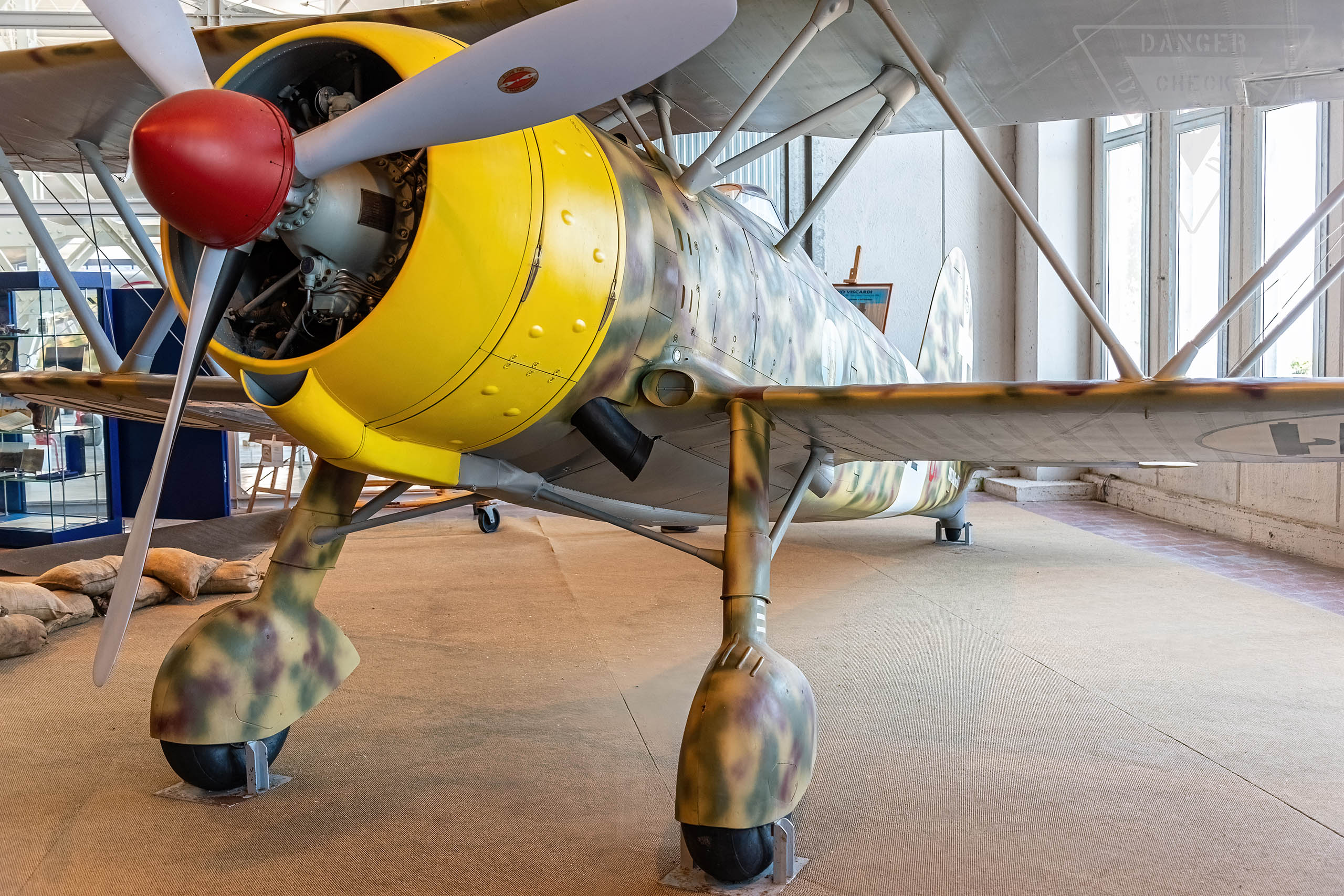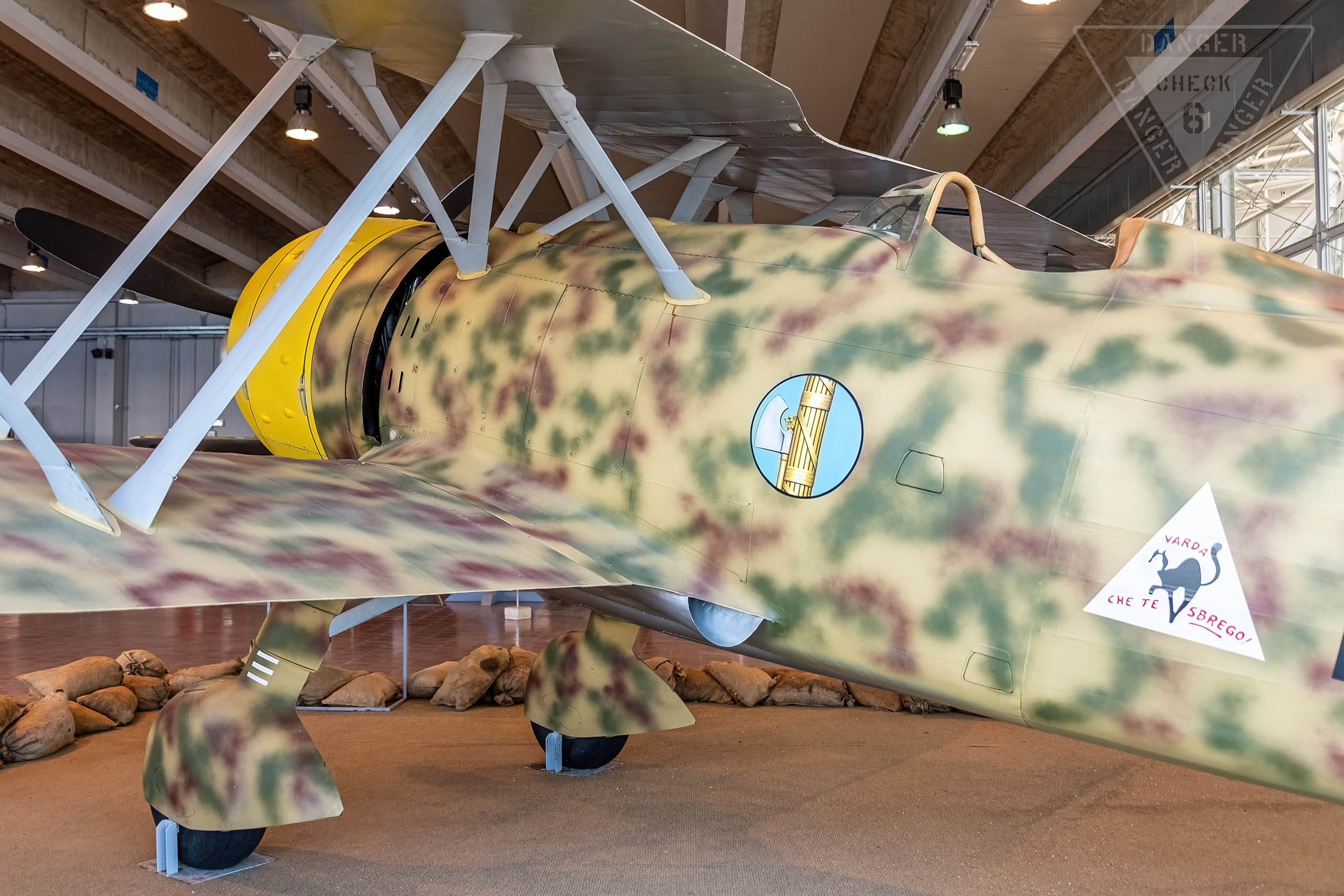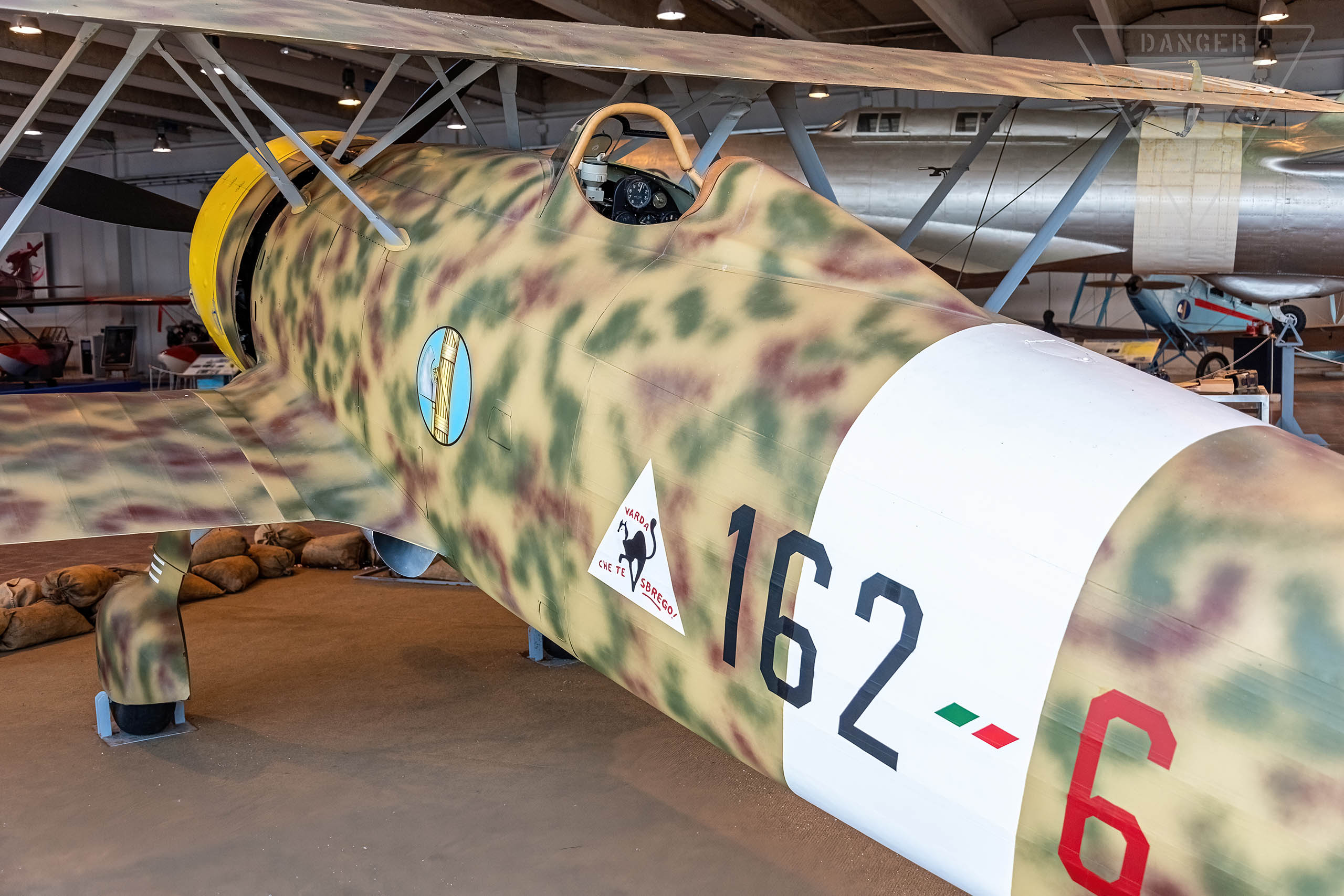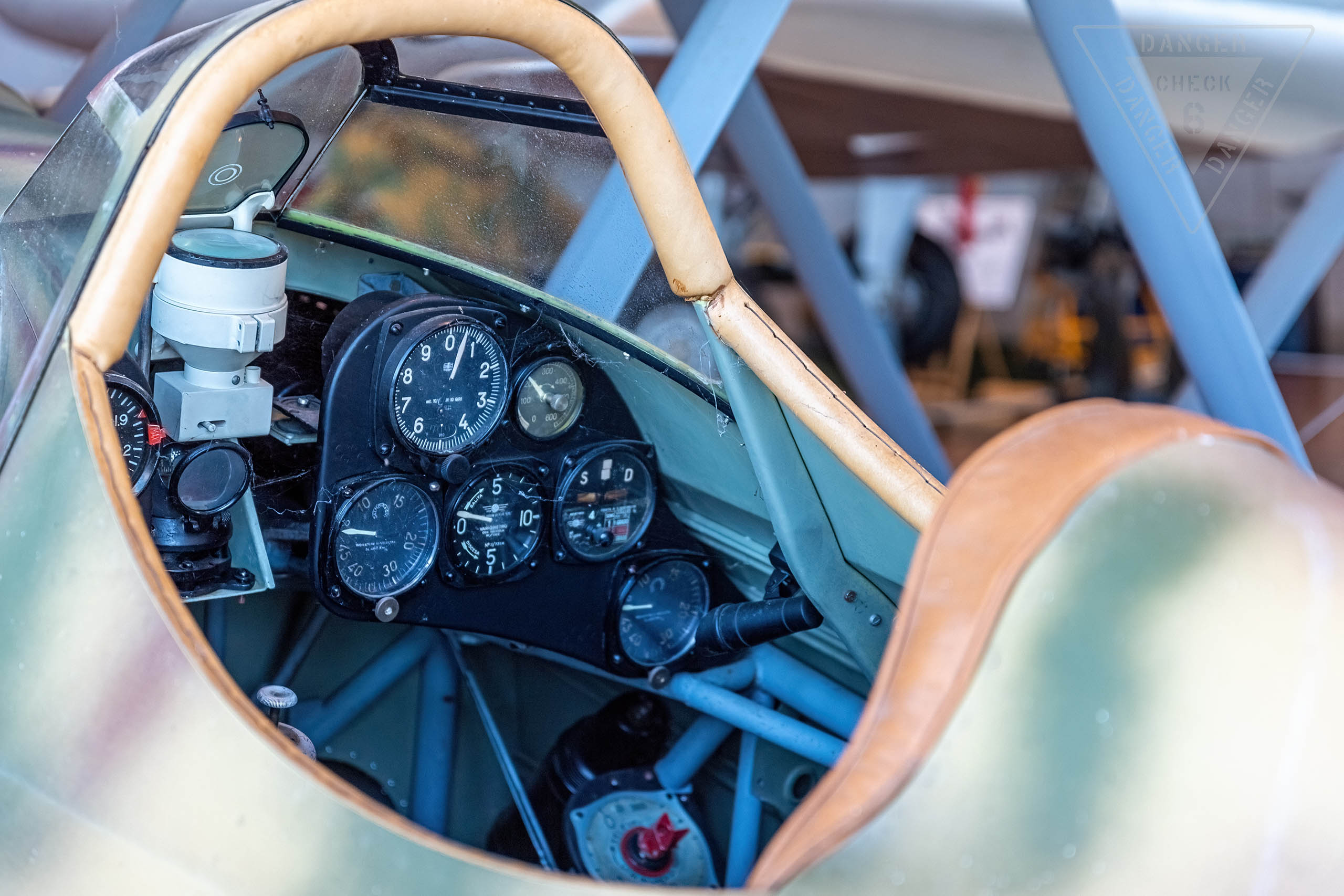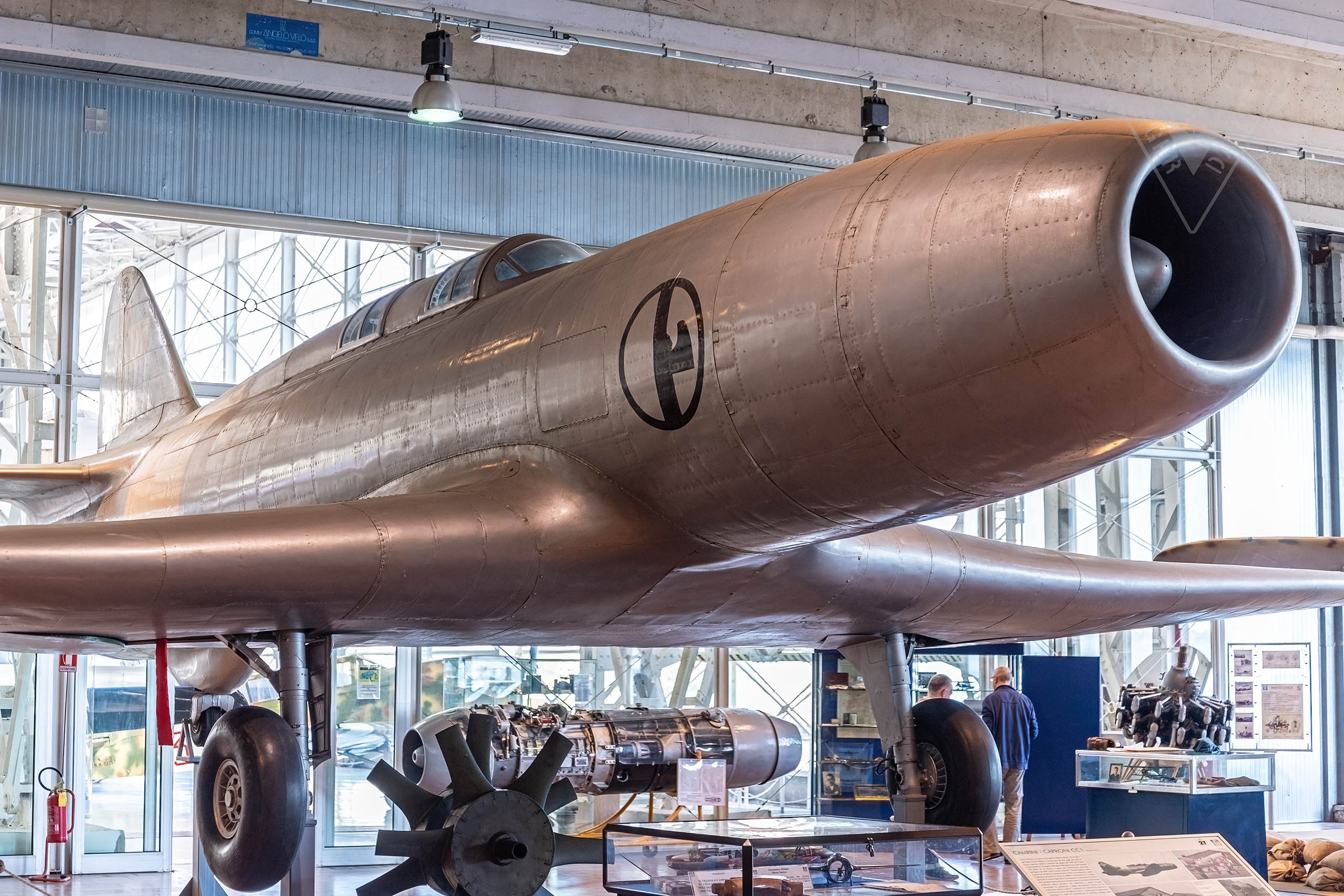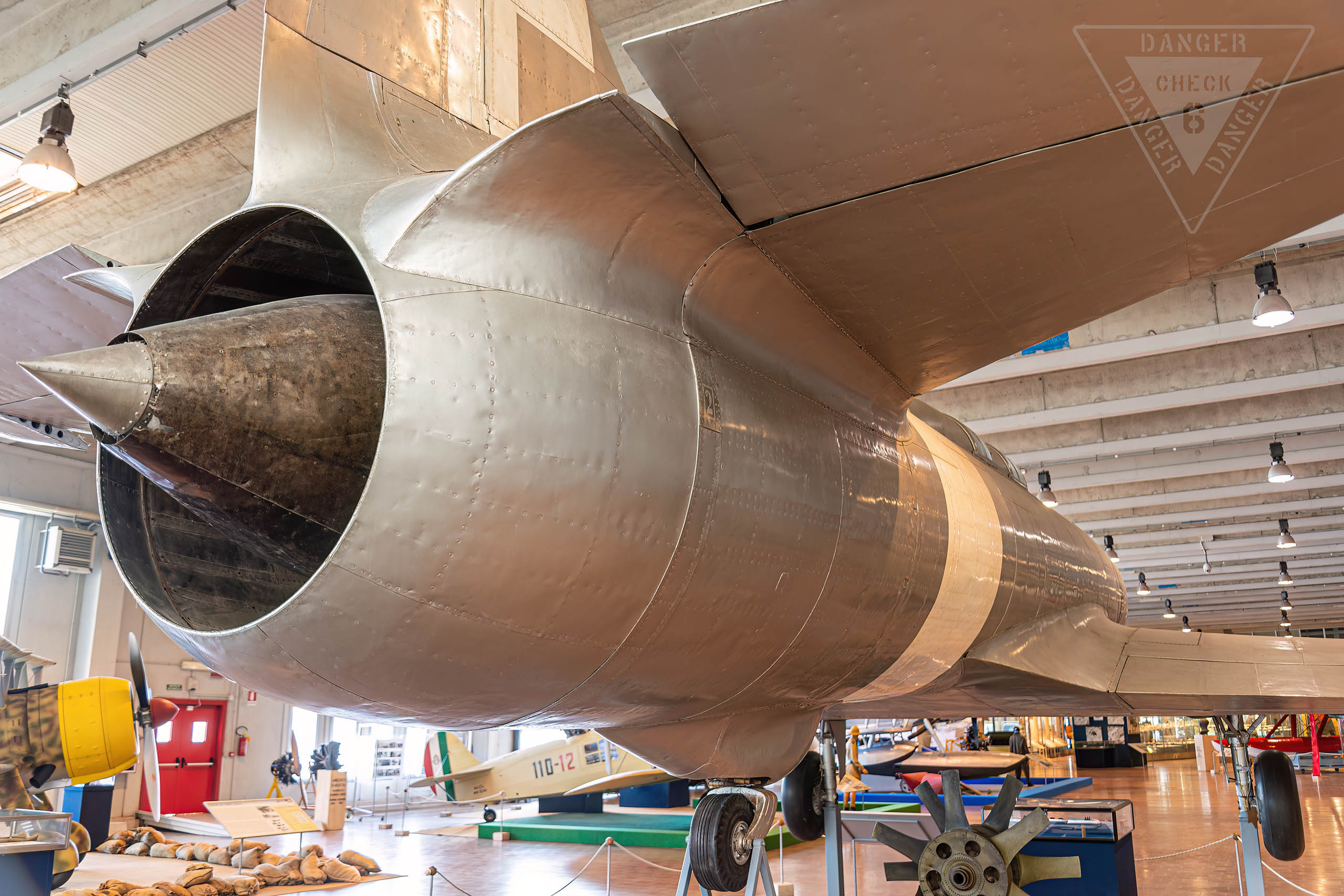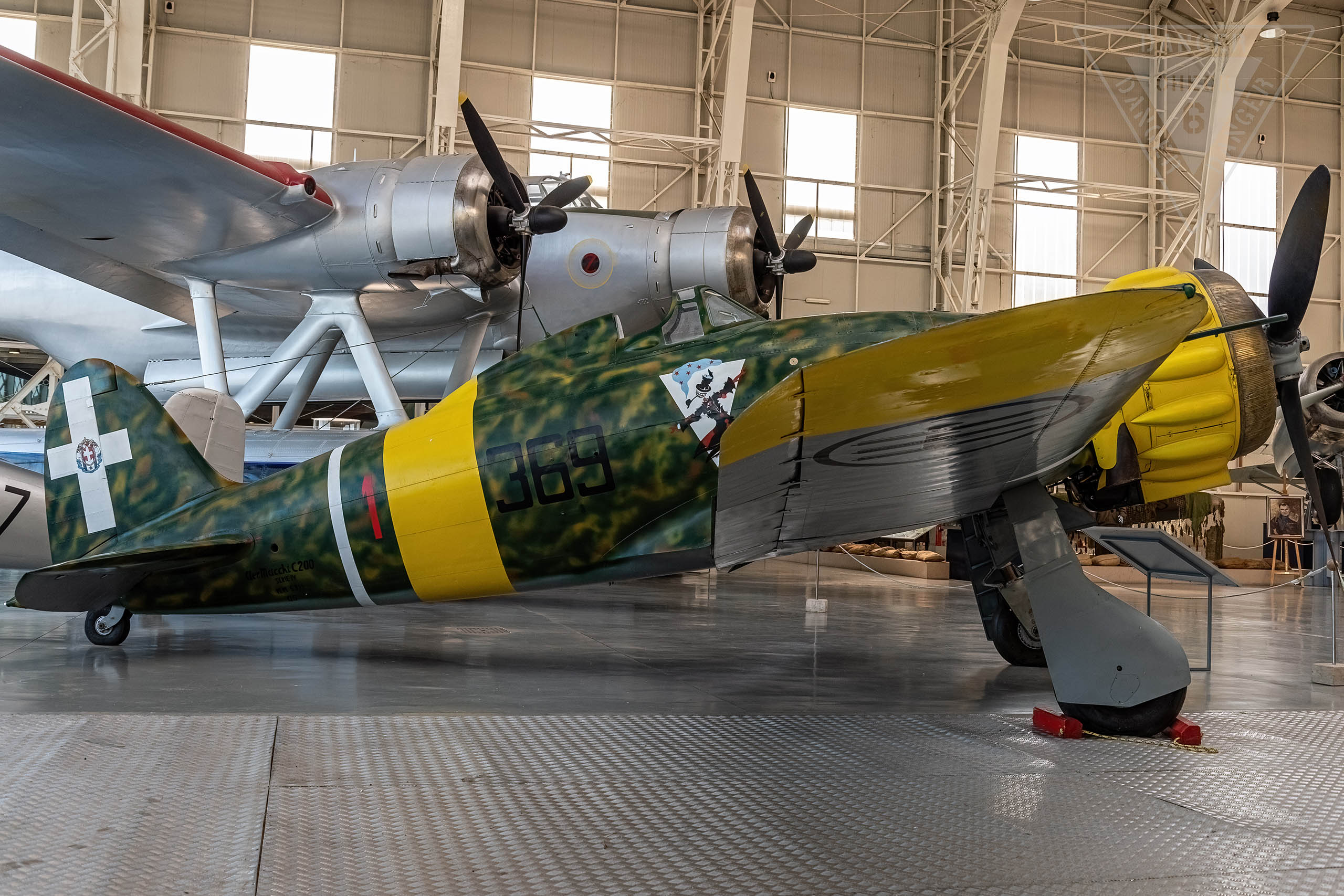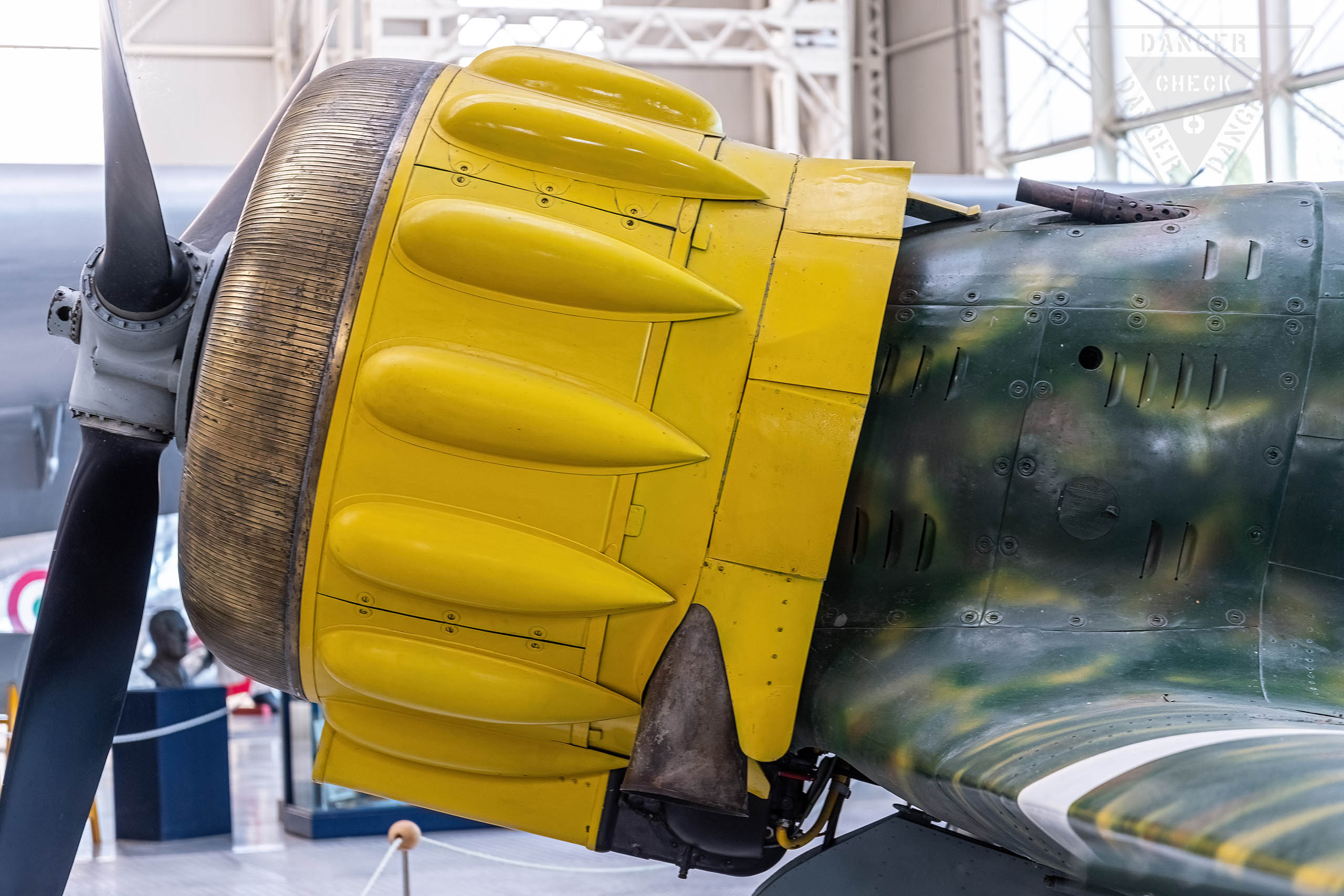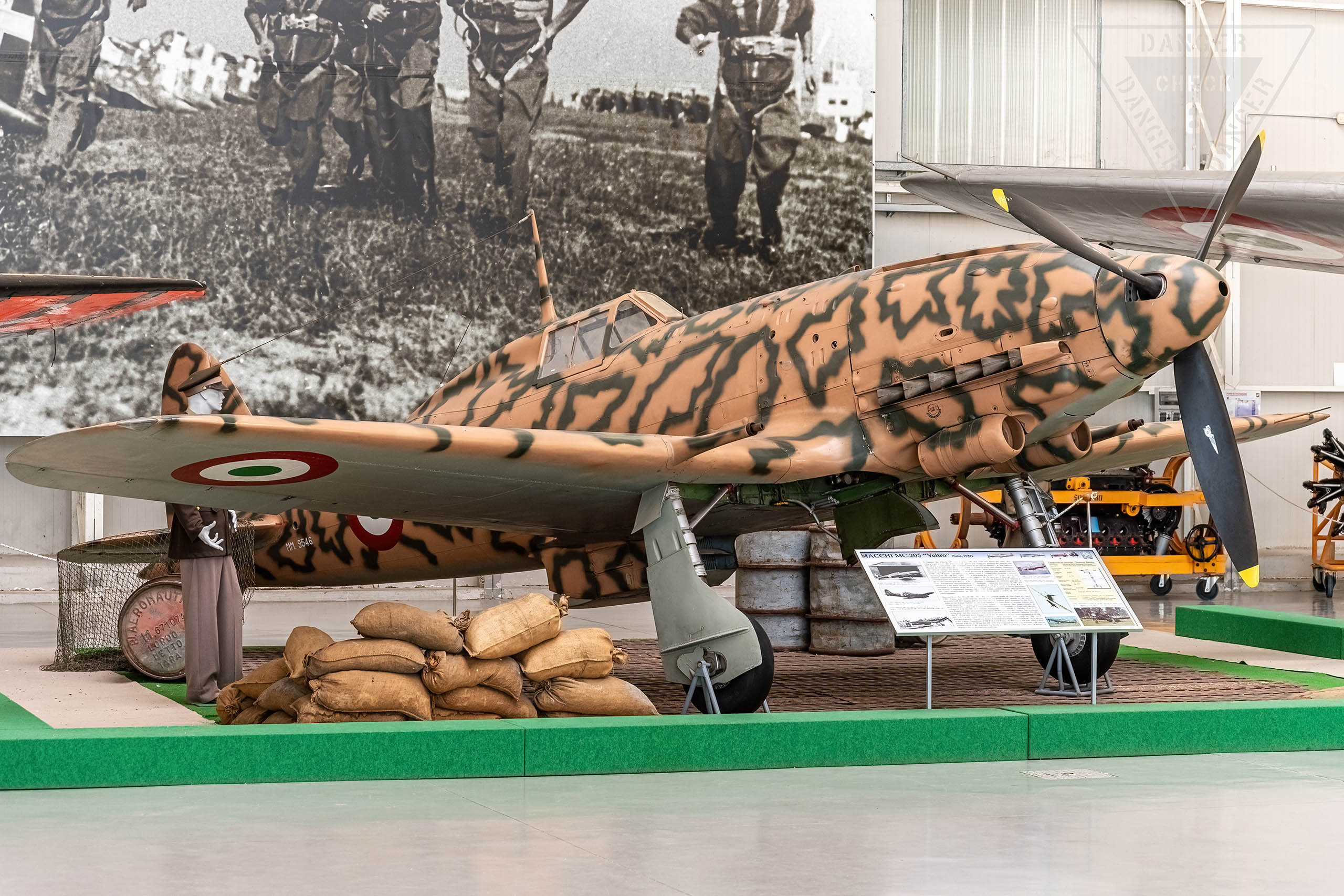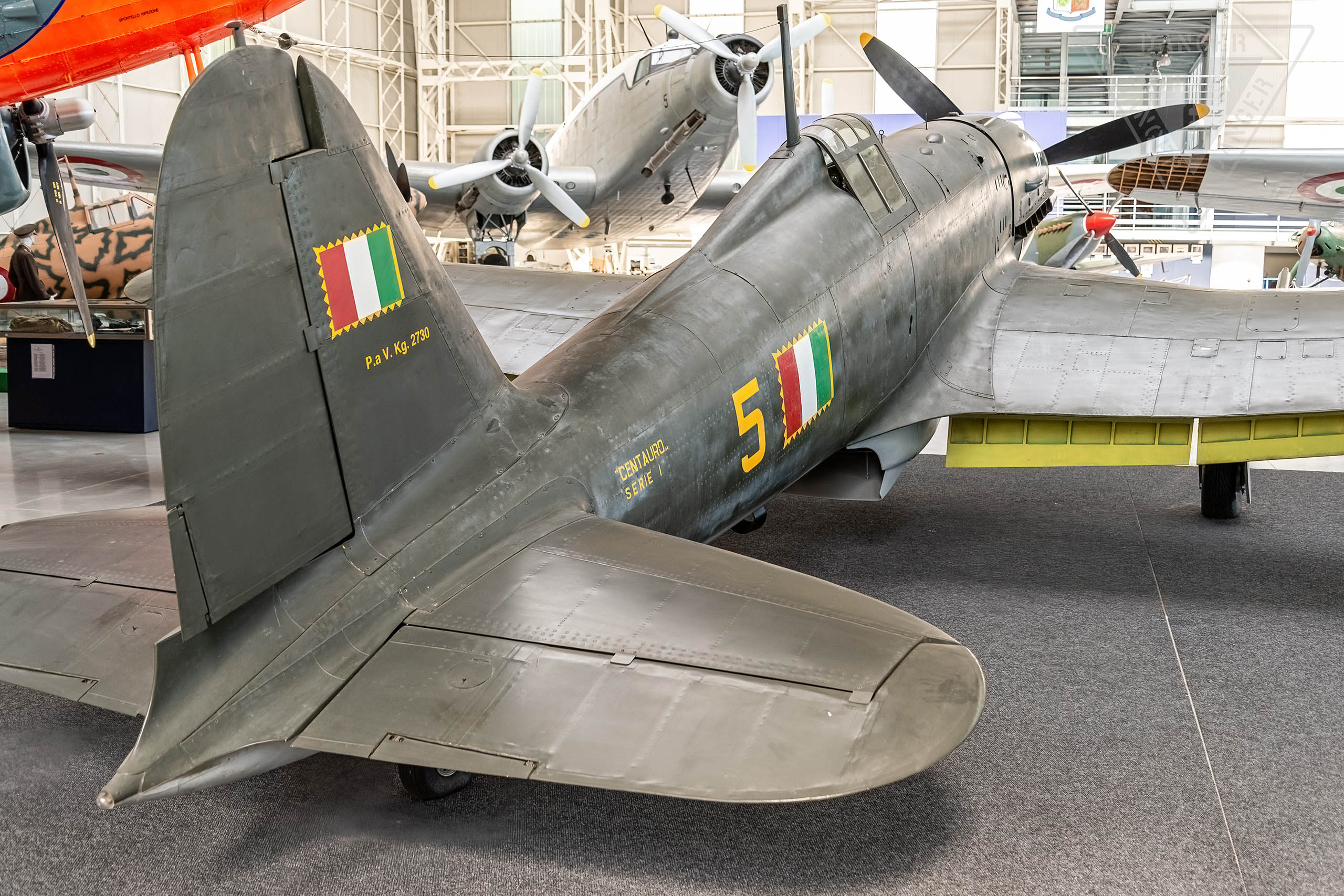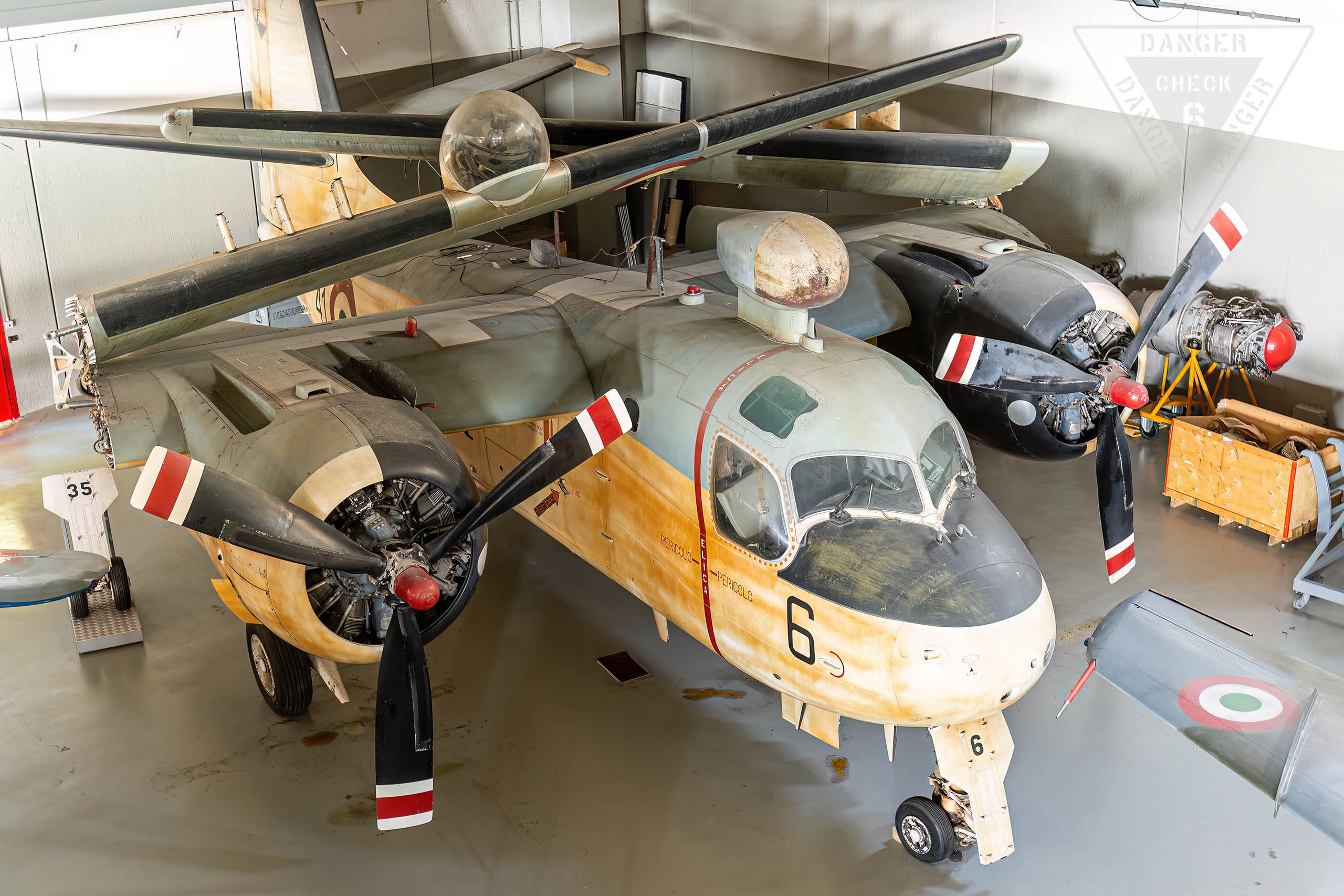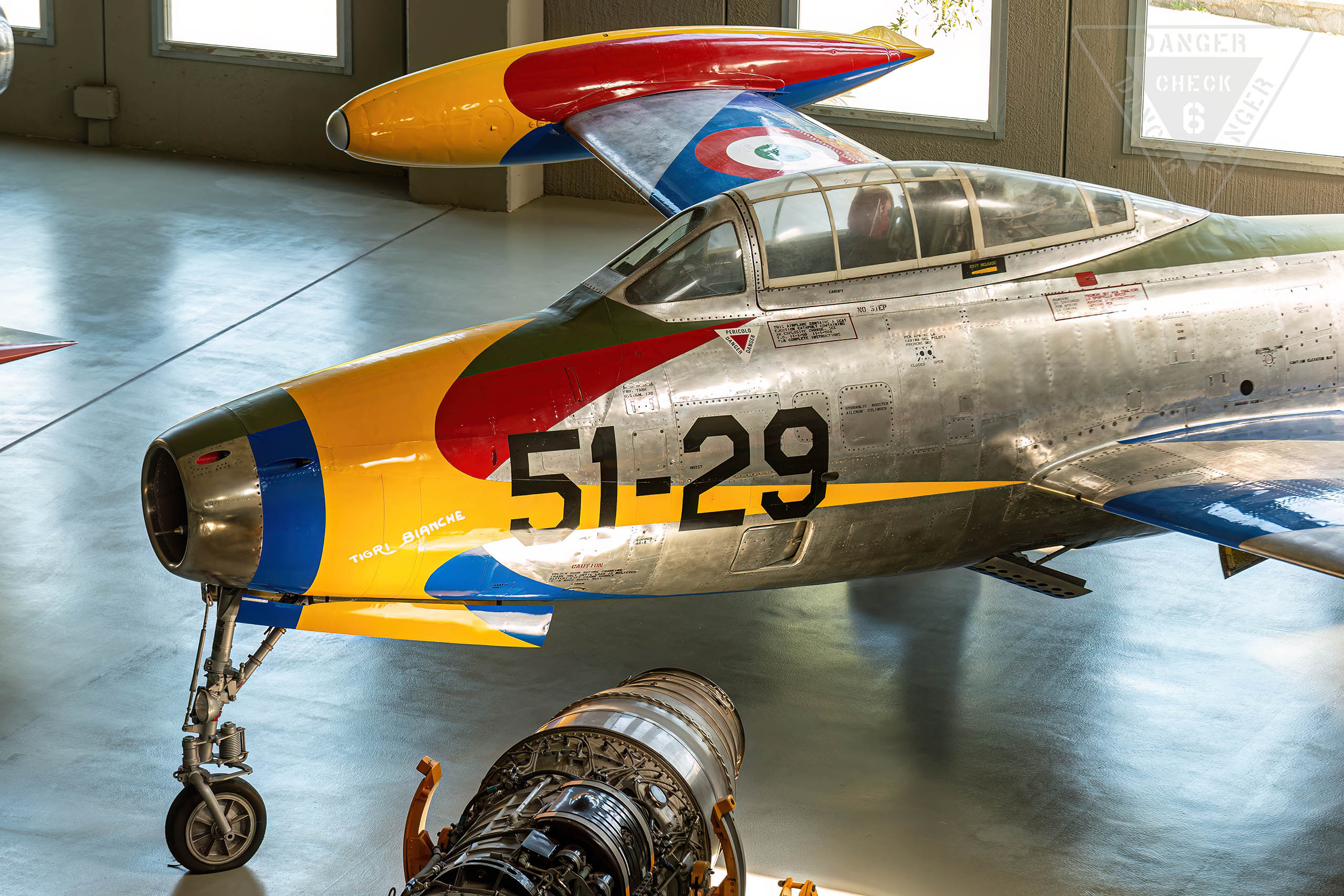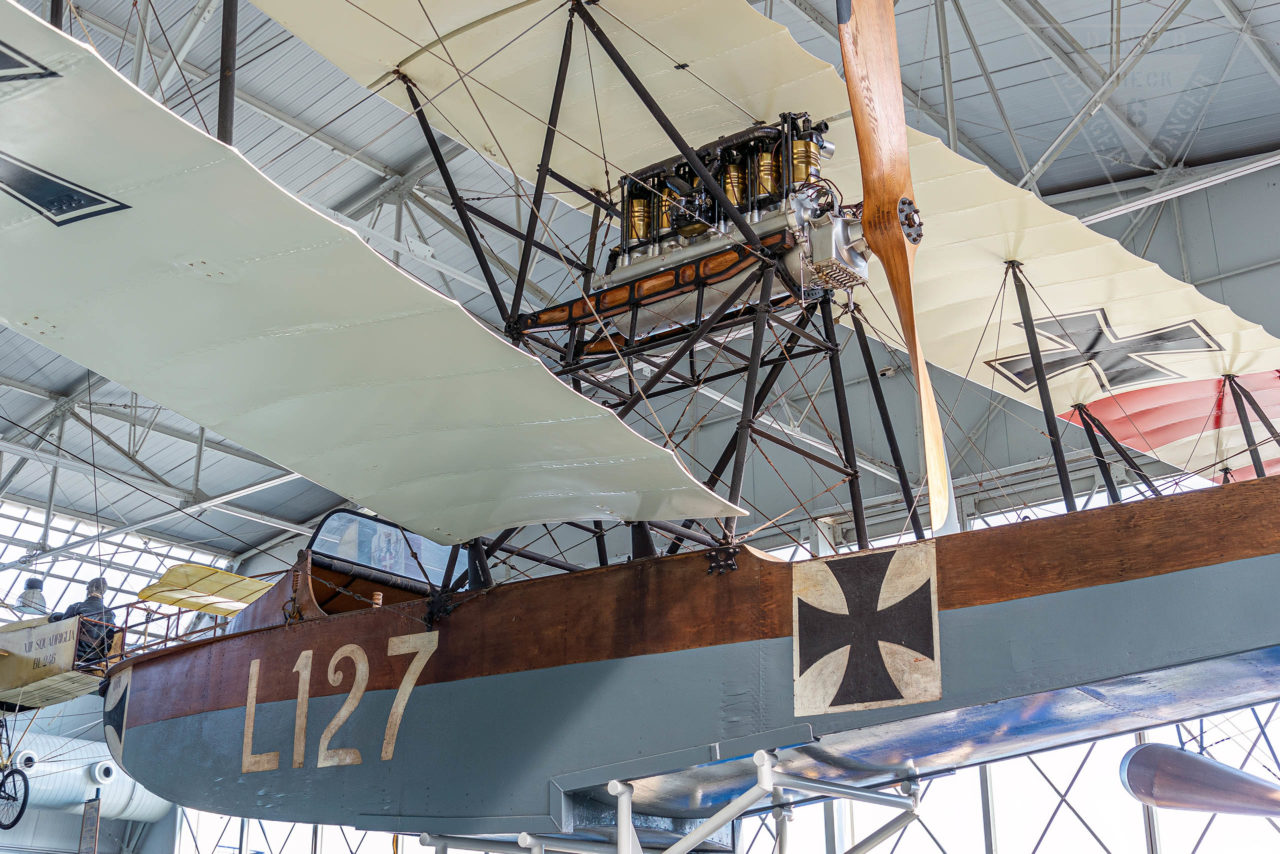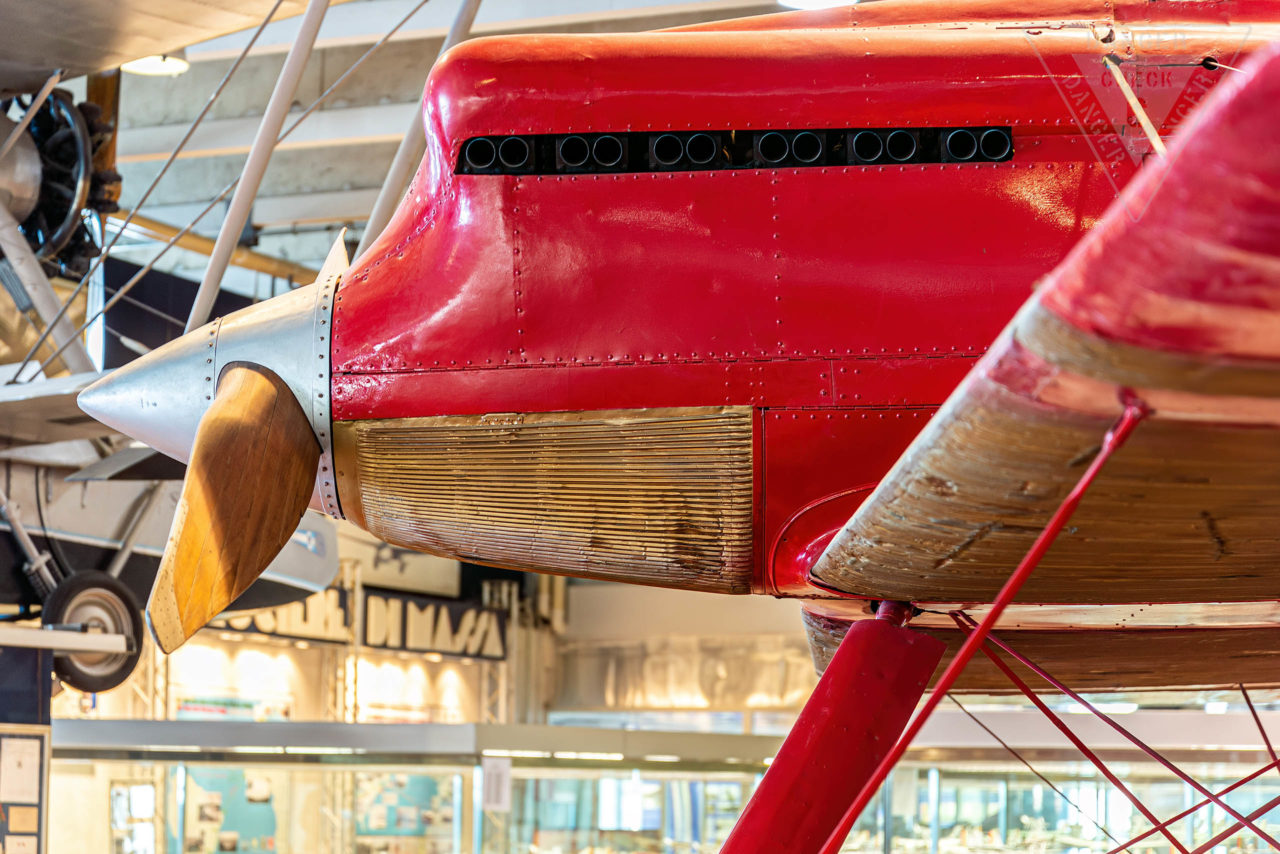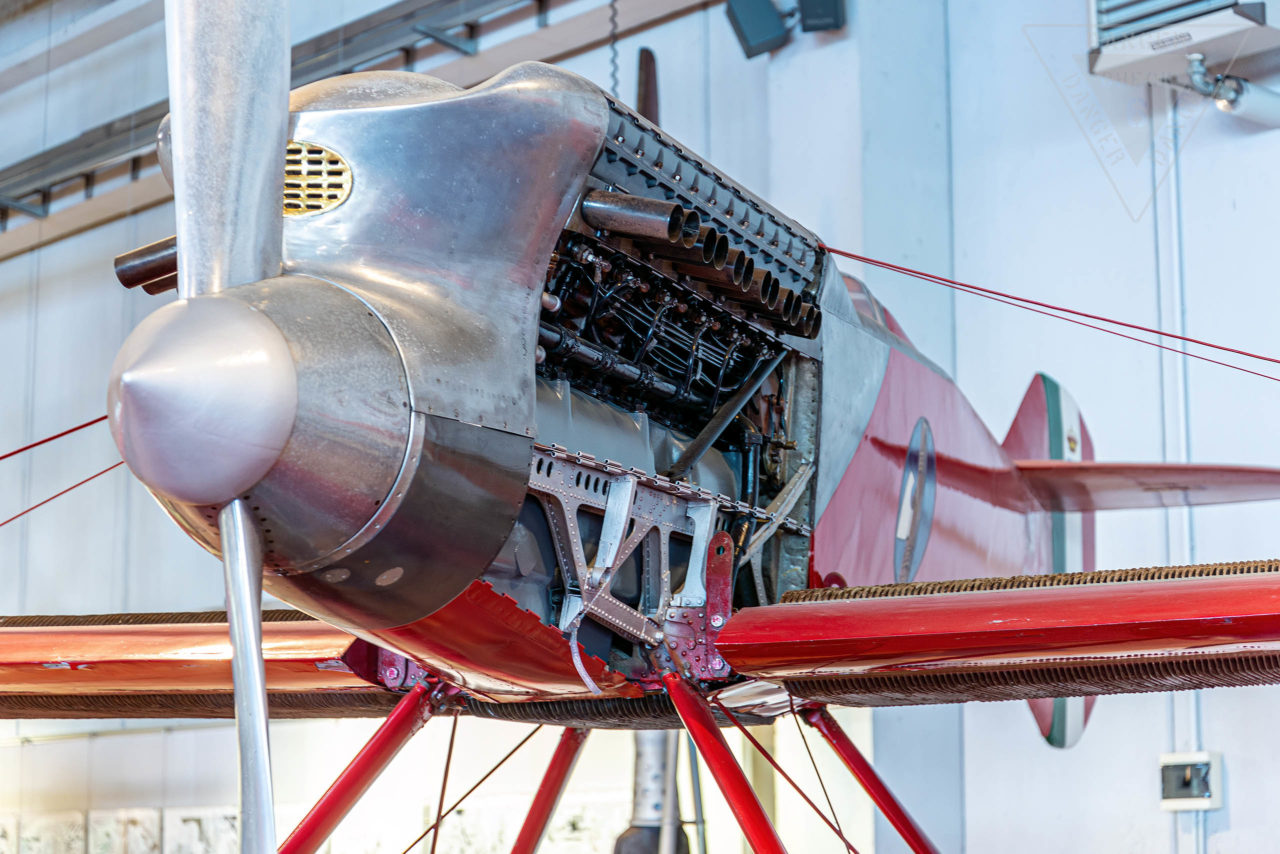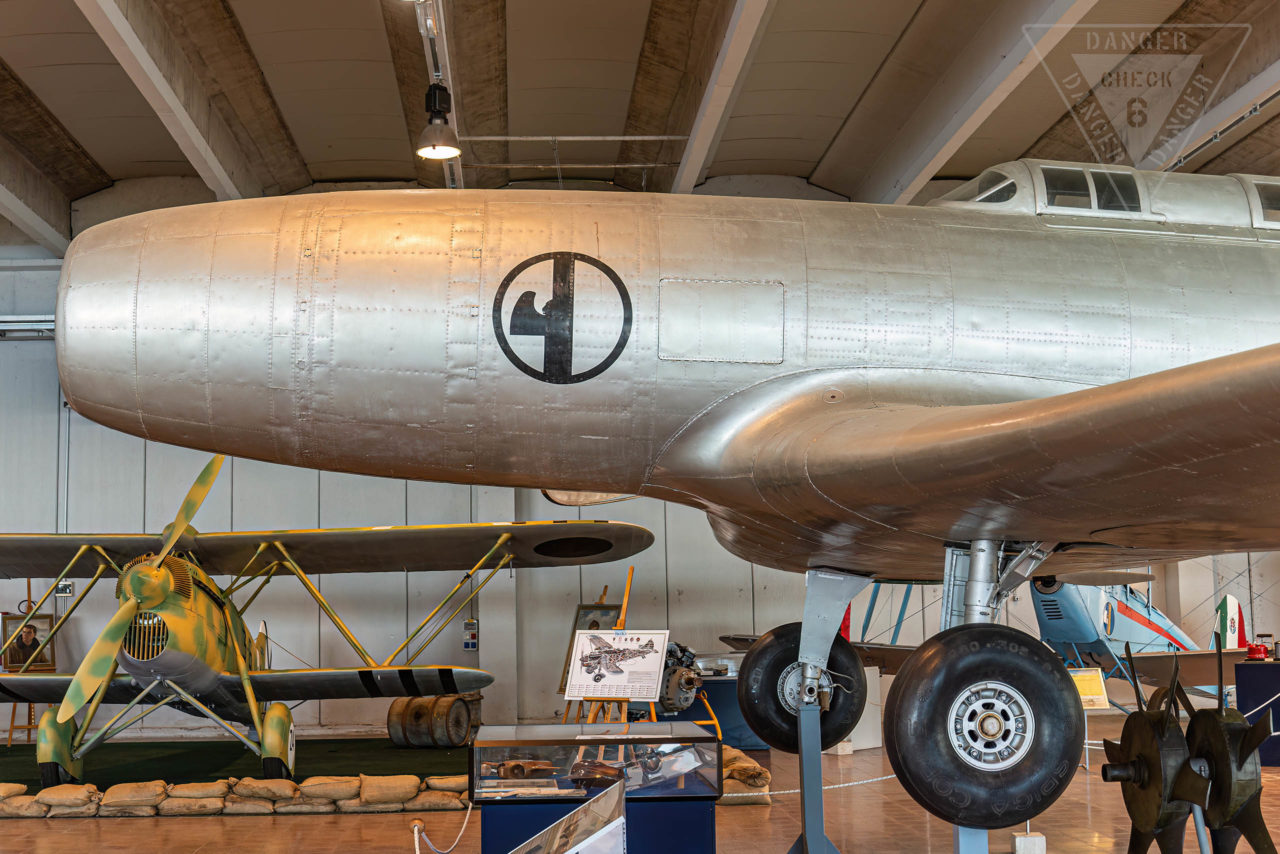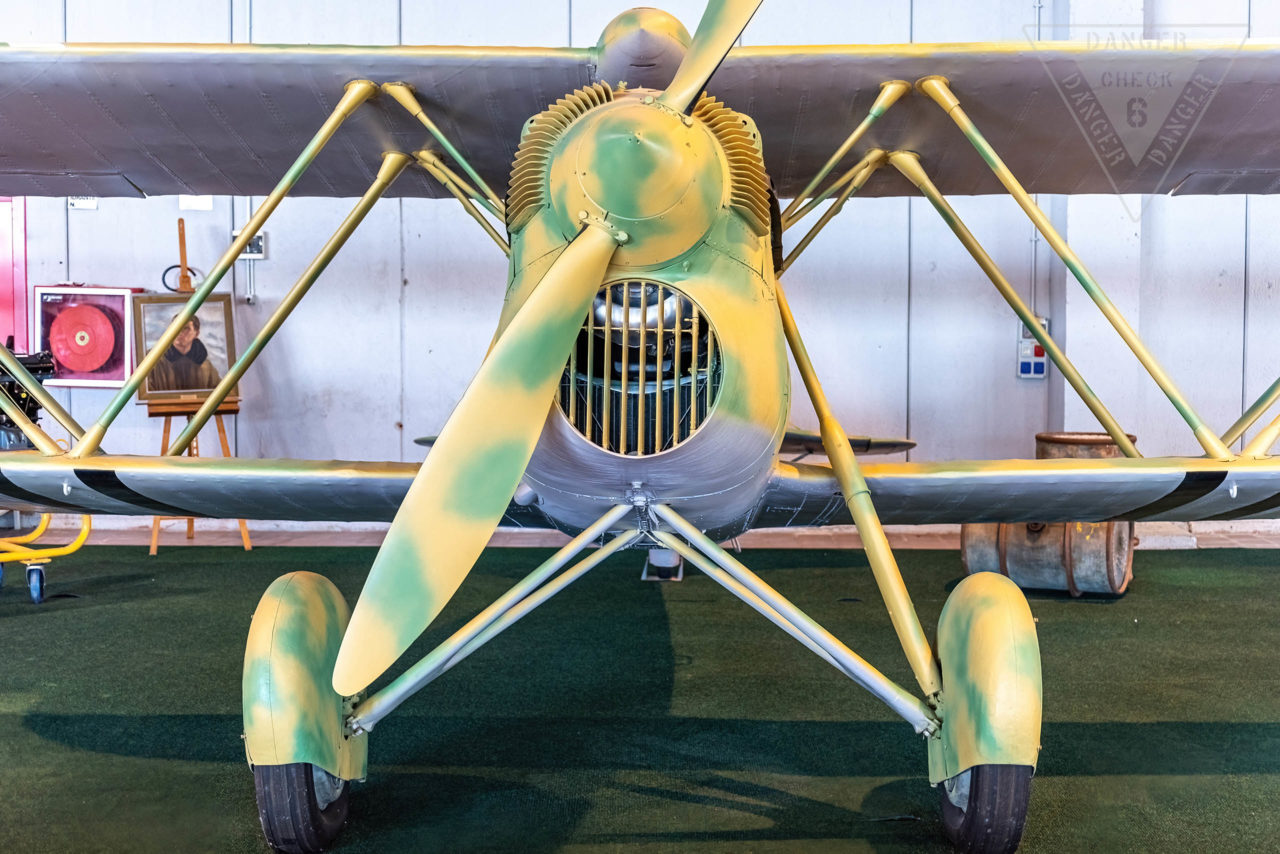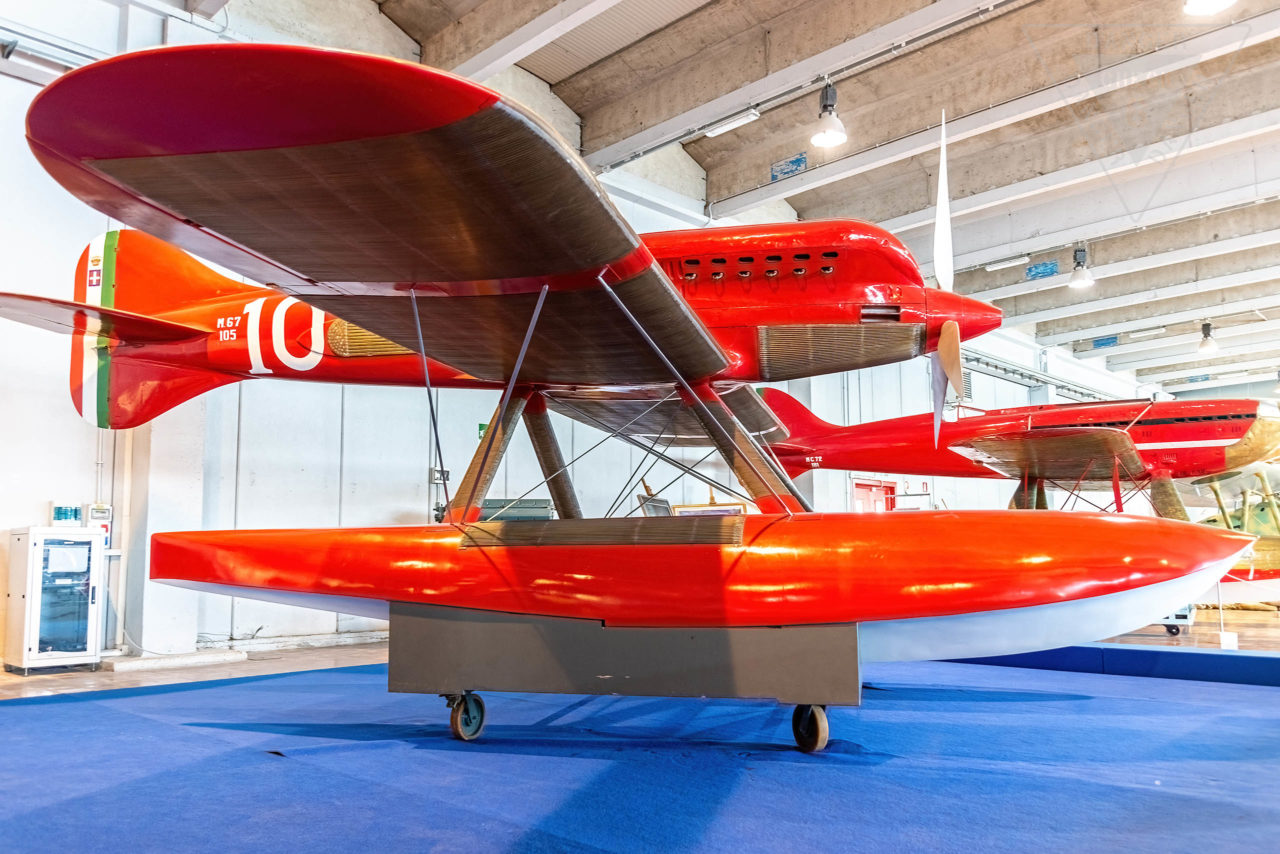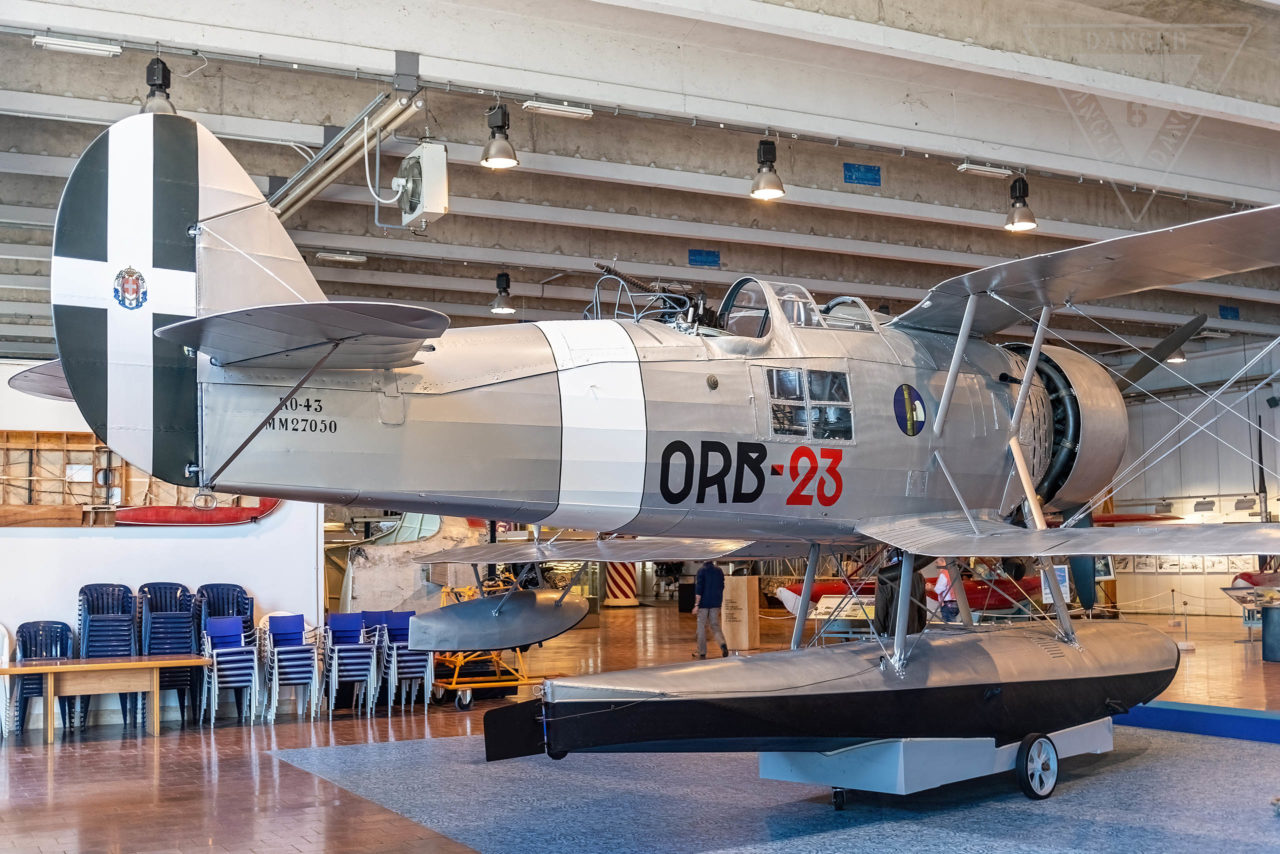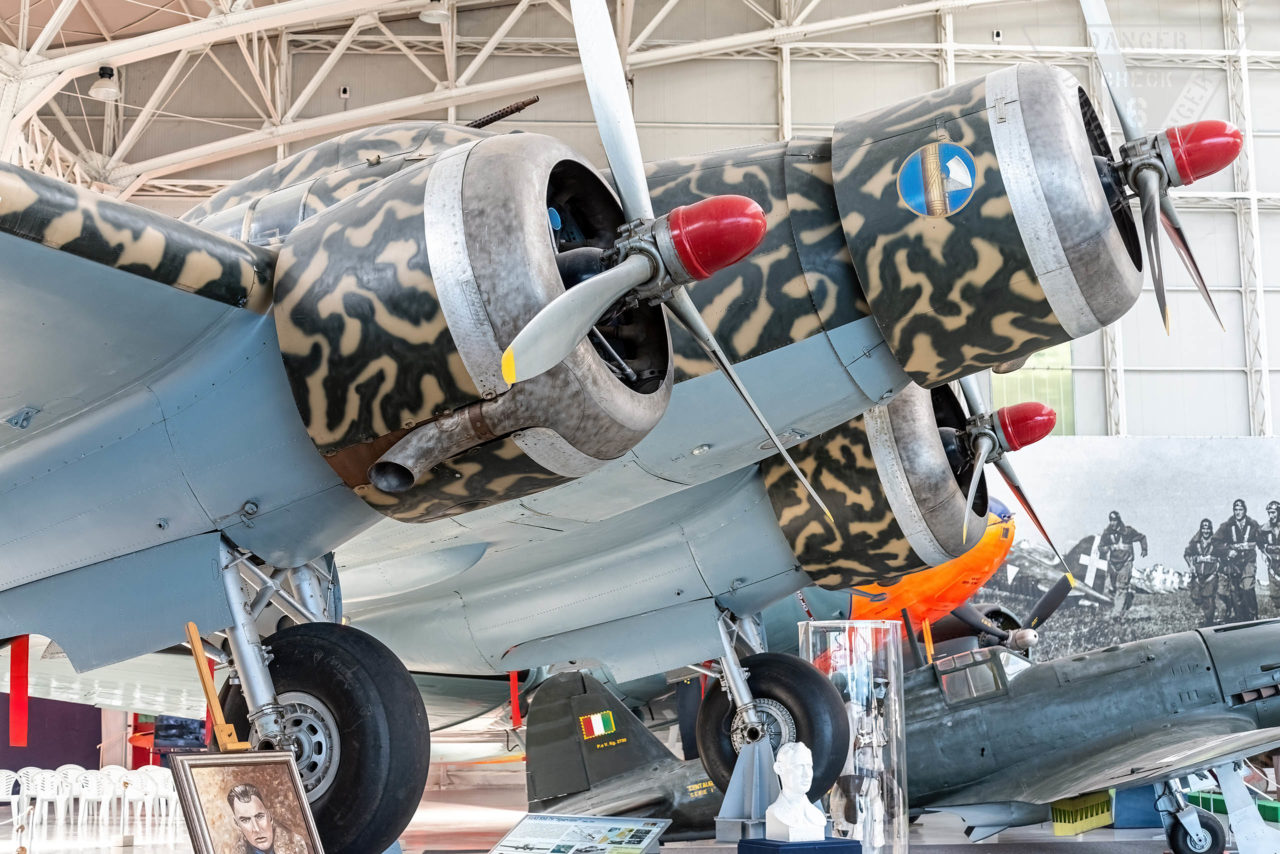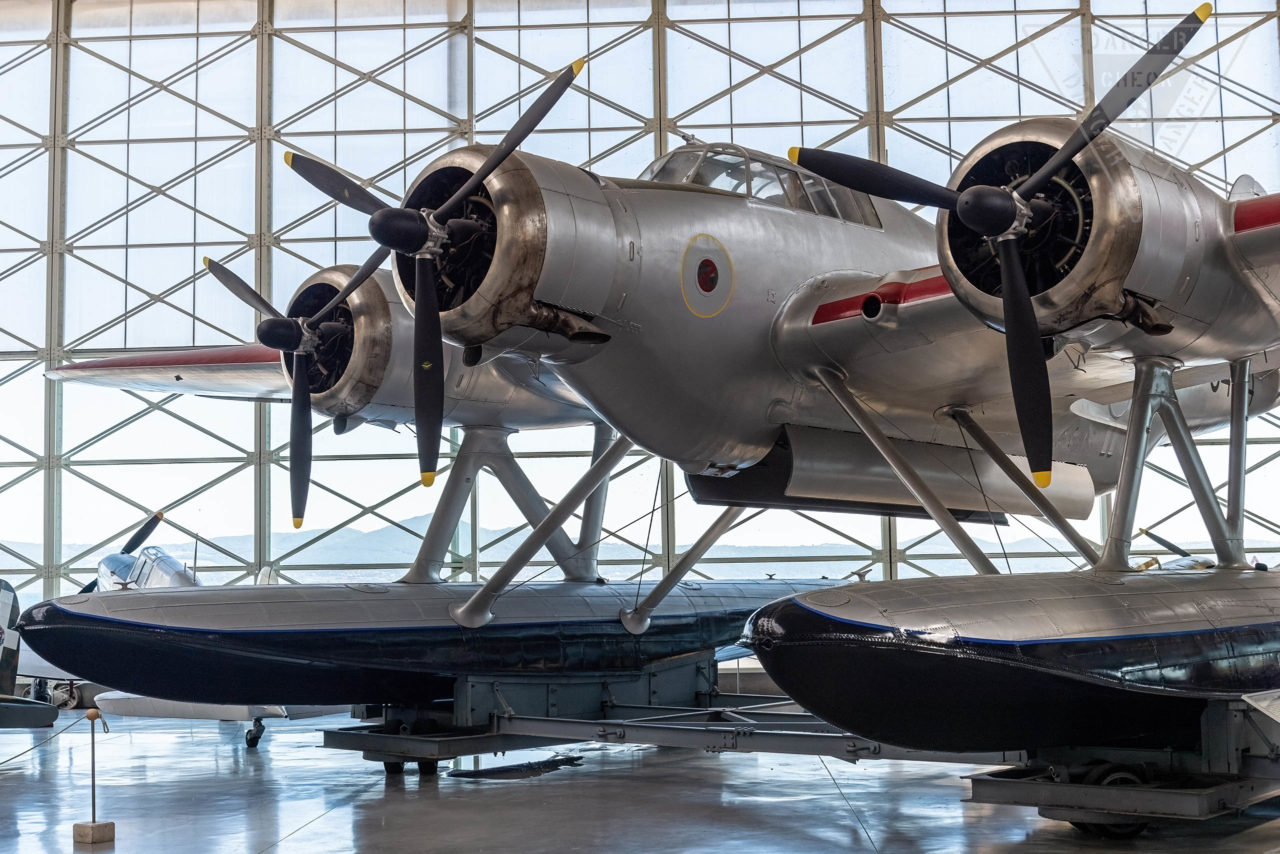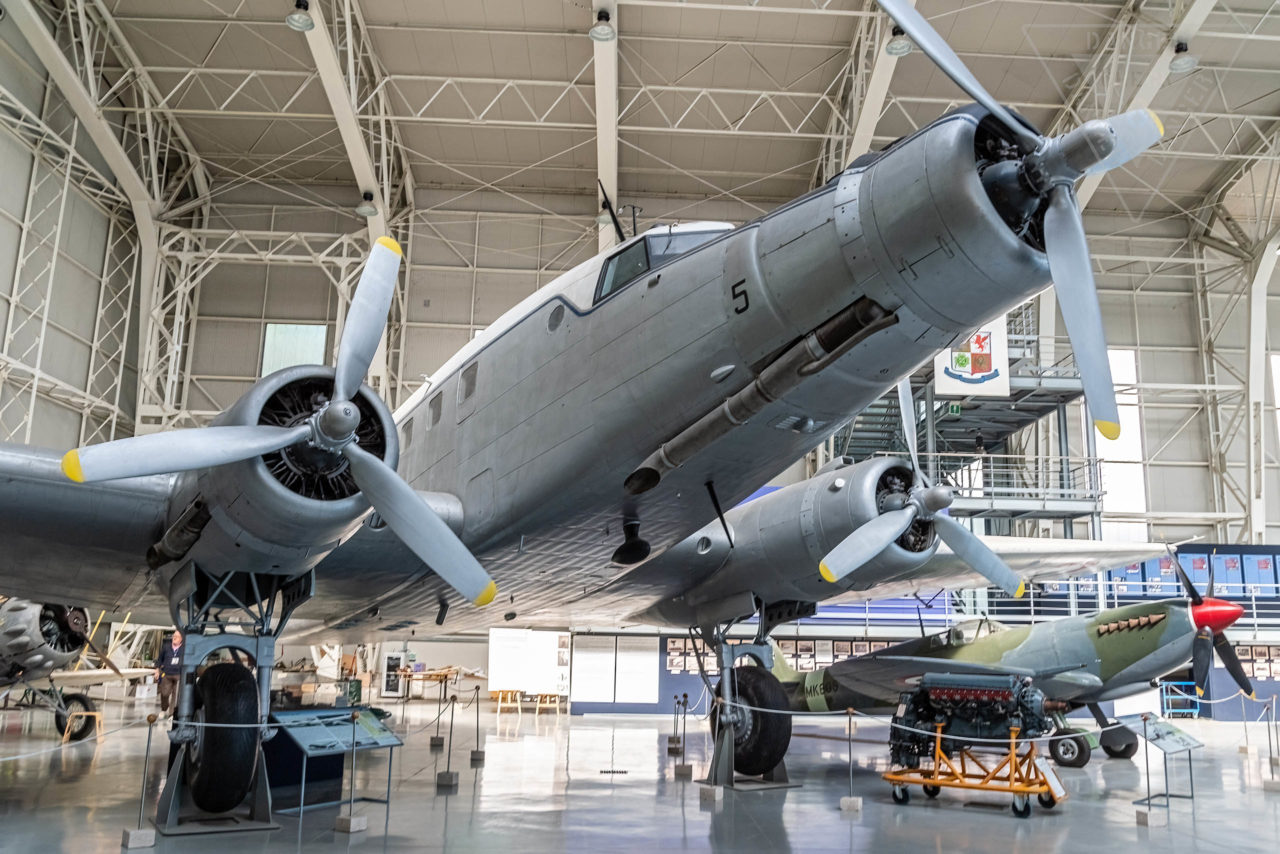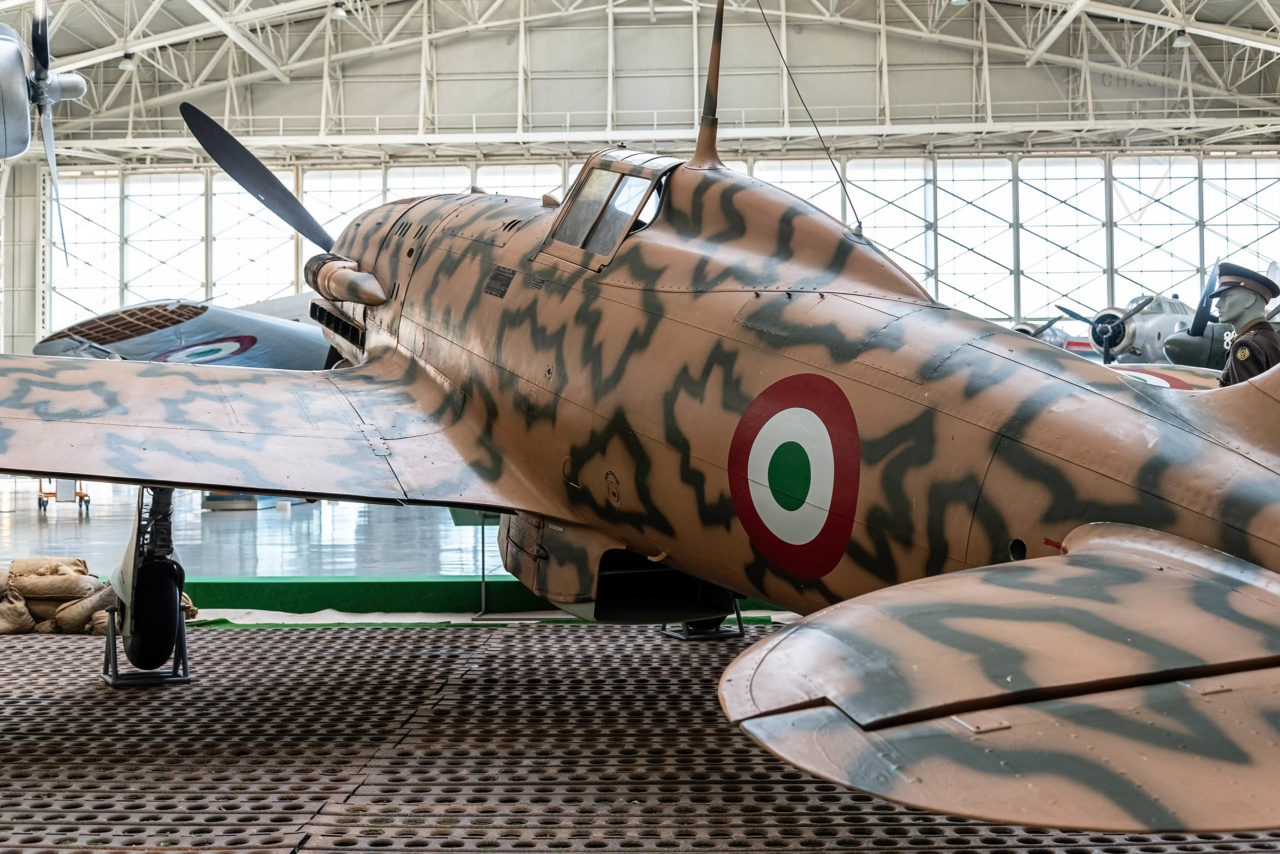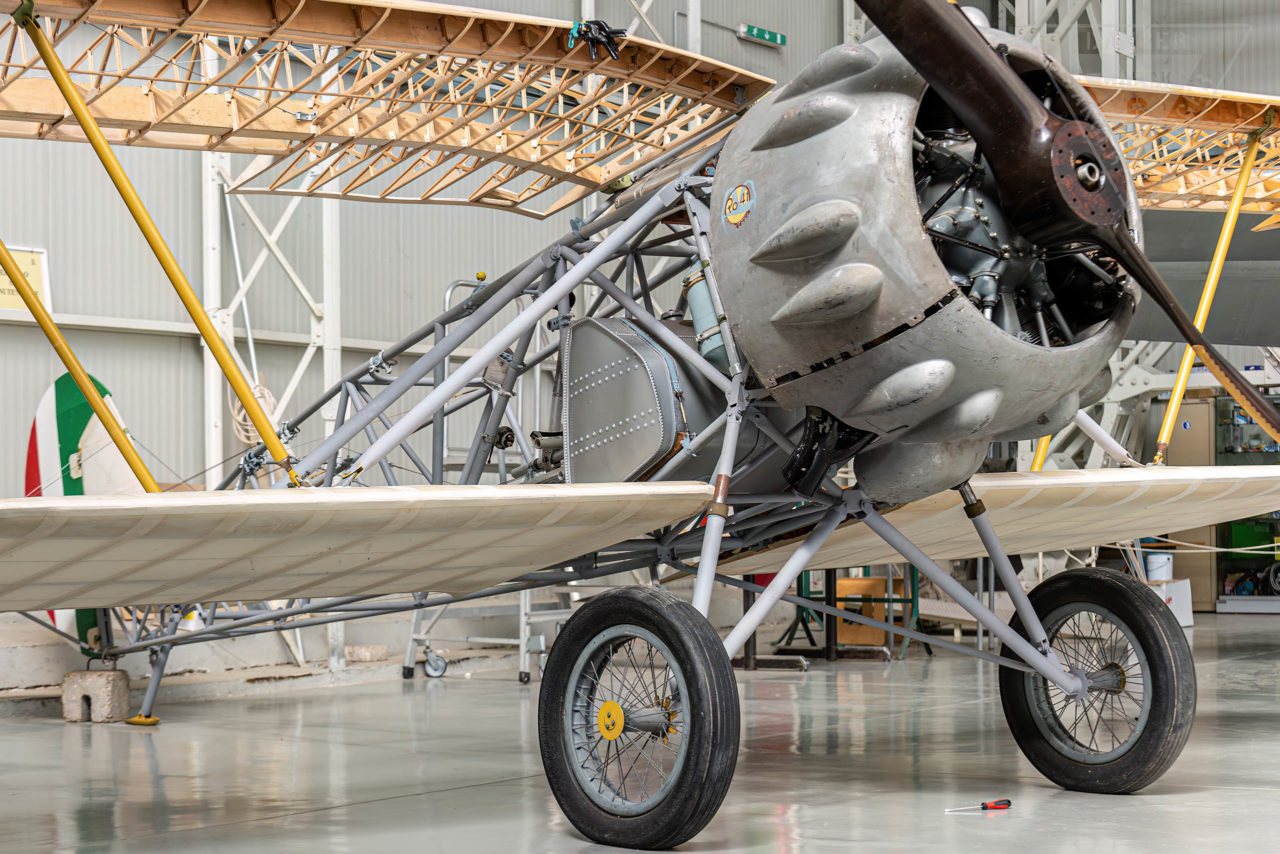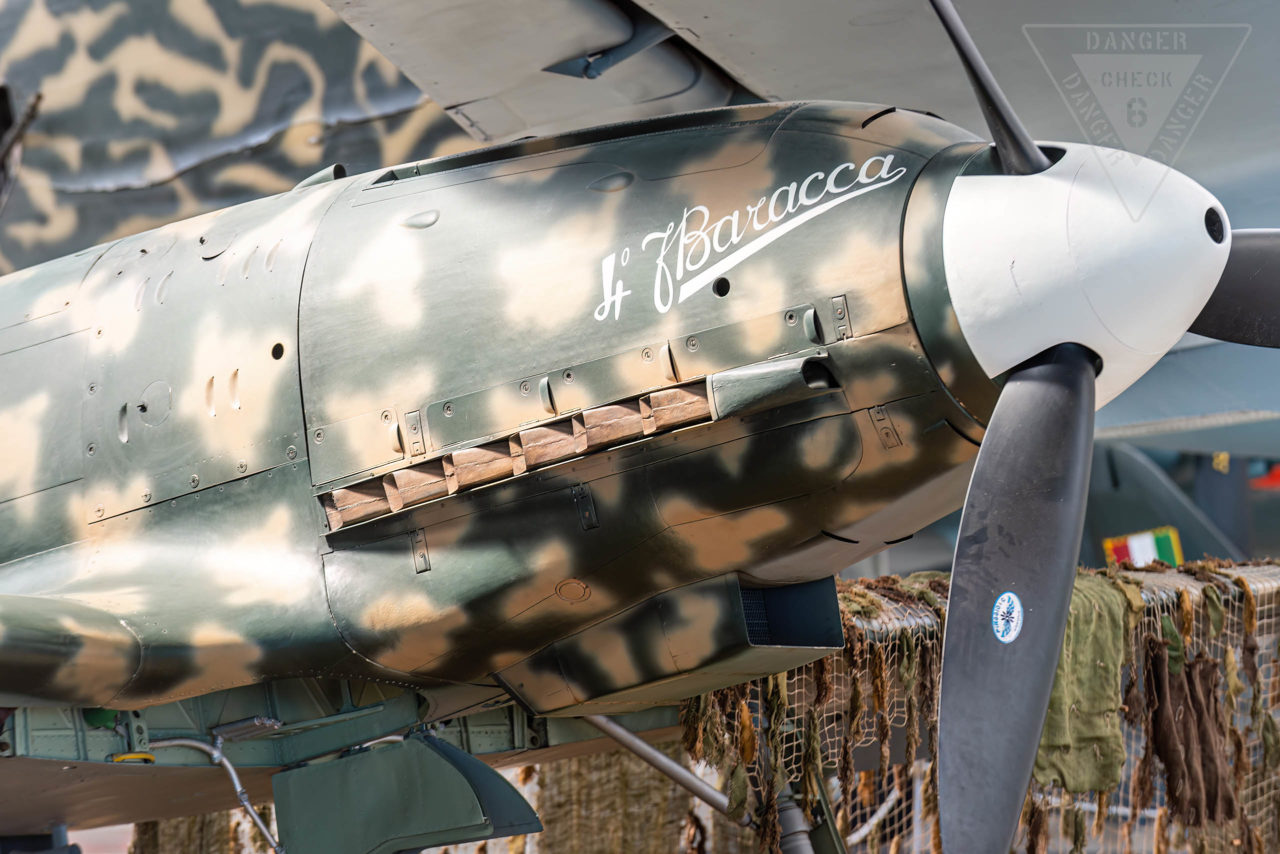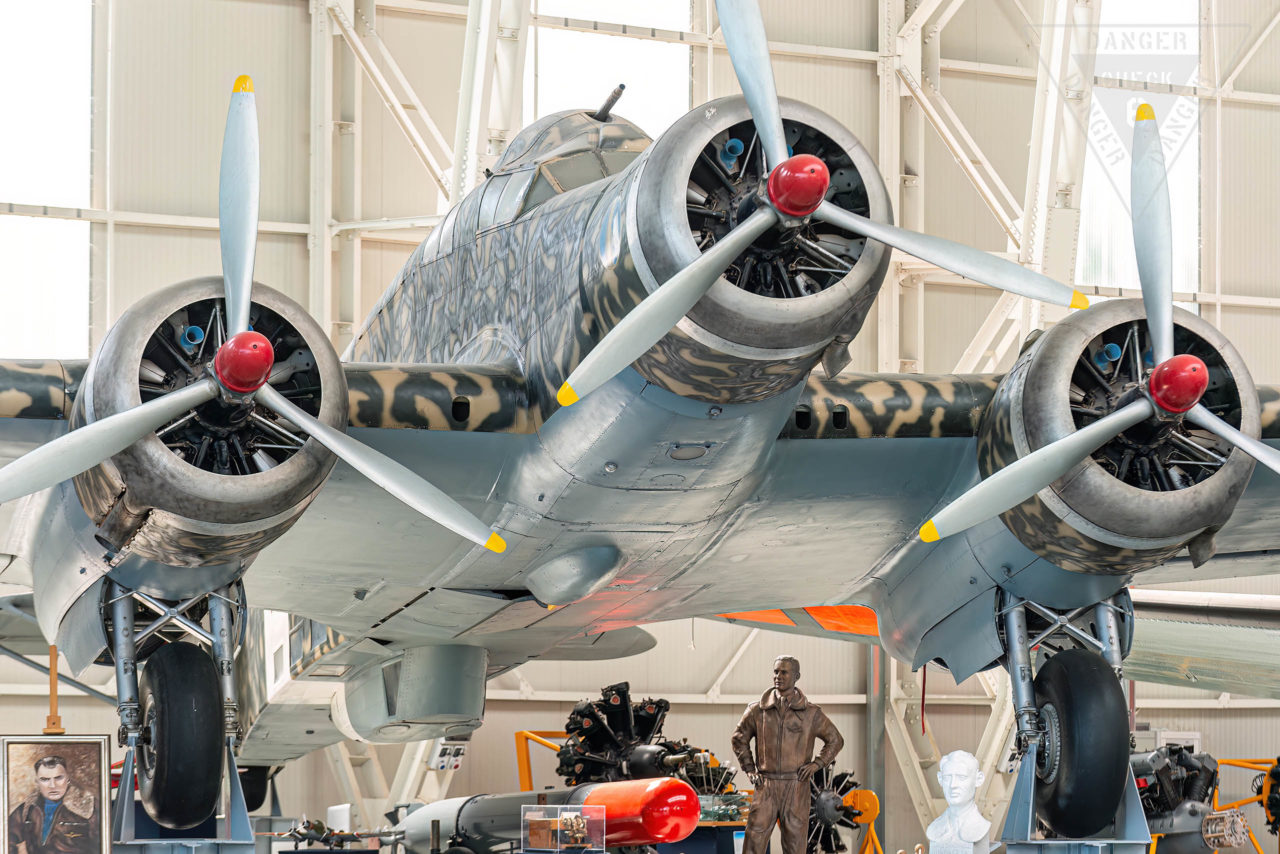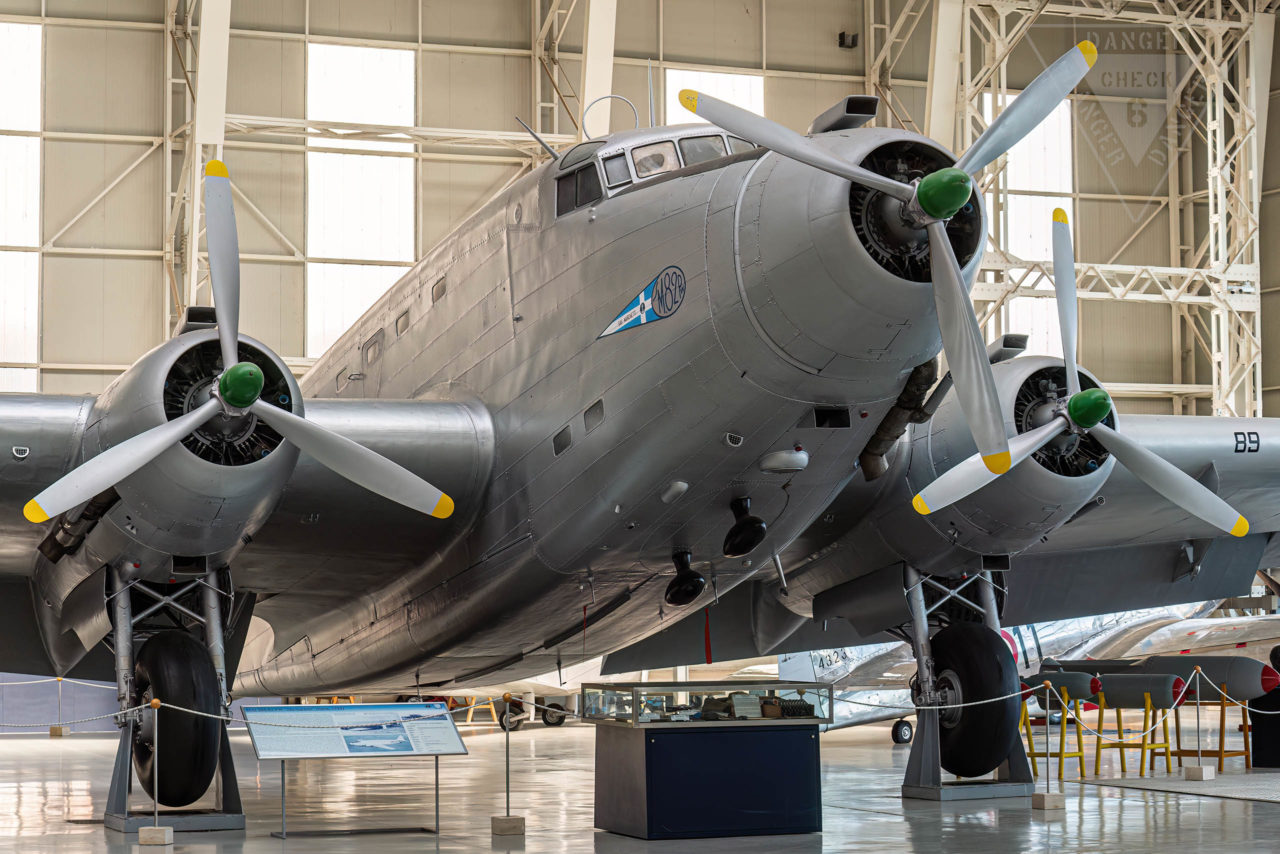Museo Storico Aeronautica Militare - Vigna di Valle / Italy
Update: 2019/10/30 by Robert Kysela / CHK6
The Italian way of life, Italian art, architecture, fashion and design, not to mention its excellent cuisine are admired and appreciated by many all over the world. The Italian automotive industry has produced many legendary marques including FERRARI, LAMBORGHINI and MASERATI. Italian motorcycle manufacturers such as DUCATI and APRILIA are not only competitive on the racetrack, they also cater for a worldwide clientele as suppliers of fine, high performance machines. Far less known however is the evolution of Italy’s high-performance aircraft industry, an industry that has produced products that represented not only the pinnacle of technology of the day, but also influenced significant future technical development within the global aviation industry. There was a time, when the achievements of Italian designers and the performance of Italian pilots featured on the front pages of magazines more than of any other nation.
By far the best place to visit is located some 45 km north of Rome in the small town of Vigna di Valle
R. Kysela
Perhaps one of the reasons why names such as CAPRONI, SAVOIA MARCHETTI, BREDA or CANT are far less familiar when compared to NORTH AMERICAN, SUPERMARINE, MITSUBISHI or MESSERSCHMITT is because outside of Italy there are relatively few (good) preserved examples of Italian aircraft and aviation technologies. Anyone interested in Italian aircraft and aeronautical engineering must also go to Italy in order to admire their rare and fascinating technological achievements. By far the best place to visit is located some 45 km north of Rome in the small town of Vigna di Valle situated on the picturesque Lago Bracciano. Here, the official museum of the Italian Air Force, the MUSEO STORICO AERONAUTICA MILITARE occupies some 13,000 square meters of space and is a must see for anyone interested in the technology and history of Italian aviation with almost 80 exhibits on display.
The interior exhibition is divided into four exhibition halls which guide the visitor chronologically through more than 100 years of Italian aviation history. Its interesting to note that with two exceptions there is not a single machine that does not come from the hands of an Italian designer or at least did not fly in the service of the Italian Air Force. The two exceptions are a Junkers J.1 (only the fuselage segment) which was captured in 1917 by Italian troops and a replica of the Wright Flyer. Even the world’s only preserved copy of a LOHNER Type L flying boat from the Austrian Empire’s k.u.k. MARINE has a connection with the Italian aviation industry. A replica of this machine was manufactured by NIEUPORT-MACCHI under the designation L.1. A total of 14 examples were built, with this Austrian flying boat becoming the extremely successful MACCHI M.5.
The postwar period saw Italy build a powerful aerospace industry despite some major economic difficulties.
R. Kysela
Following the first manned, powered flight by the Wright brothers it was above all the European nations that drove aviation development with great enthusiasm and ingenuity. These new technologies were further developed through the advent of the First World War where in addition to Germany, France and Great Britain the then Italian Kingdom was to play a major role. During the 1915-1918 war Italian aviation forces (CORPO AERONAUTICO MILITARE) were predominantly equipped with French material, however the licensing to Italy of various designs allowed Italian designers to gain enough experience make their own technological advancements. The postwar period saw Italy build a powerful aerospace industry despite some major economic difficulties. In the 1920’s and 1930’s many products produced by Italian companies achieved a number of world records, some of which are still in existence today!
In 1911, at a time when aviation was still in its infancy, French industrialist Jacques Schneider initiated a competition that was to become known as SCHNEIDER TROPHY (originally named: The Coupe d’Aviation Maritime Jacques Schneider). This competition soon developed into a technological race between the then leading aviation nations of Great Britain, the USA, France and of course Italy. The winner of the trophy had to win three races in a row (within five years) flying a prescribed race circuit. Although the Italian team was able to win several times (1920, 1921 and 1926) they were ultimately beaten by the SUPERMARINE company which won for Great Britain on 13th September 1931 with an S.6B achieving a cruising speed of 547.31 km/h. However, the British S.6B won unopposed as their competitor, the MACCHI-CASTOLDI MC.72, had not been finished in time when the race took place! Ironically, only one year later the Italian race plane achieved the unbeaten world speed record for piston-powered seaplanes of 709.2 km/h! The MUSEO STORICO features three Italian racing aircraft of this era: the winner of the 1926 US competition, a MACCHI M.39, an M.67 of 1929 and the world record holder, the MC.72.
Due to production of numerous high-profile successes the Italian domestic aircraft industry received a considerable number of export orders right up to the beginning of World War II – orders were not only received from various European nations, such as Austria, Hungary or the former Yugoslav Kingdom but also from customers further afield. Eighty five FIAT Br.20A CICOGNA twin-engine bombers were delivered to the Japanese Empire (unfortunately there is not a single survivor of this type) while the SAVOIA-MARCHETTI SM.79 SPARVIERO was exported to Lebanon and Brazil. The SM.79 was a three-engine bomber that was produced in relatively large numbers (1,217 units manufactured up to June 1943), particularly successful (and feared) was the SM.79 Torpedo Bomber. Two medium bomber variants of the type have been preserved, one is exhibited at the MUSEO dell’ AERONAUTICA GIANNI CAPRONI / Trento, while the other is on display at the MUSEO STORICO.
The most famous fighter ace of the National Spaniard was Commandante Joaquin Garcia Morato who scored 36 of his 40 kills in this machine.
R. Kysela
Particularly popular in the export market was the FIAT Cr.32 fighter biplane (the abbreviation Cr comes from the initials of the designer: Celestino Rosatelli). The prototype named the MM.201 made its maiden flight on 28th April 1932. Powered by a FIAT A.30RA twelve-cylinder V-engine, producing 600hp, this successful design proved to be at least equal to all contemporary single-seat fighters of the day, and in many cases superior as was impressively demonstrated by Italian and Spanish pilots during the Spanish Civil War. The most famous fighter ace of the National Spaniard was Commandante Joaquin Garcia Morato who scored 36 of his 40 kills in this machine. Morato preferred this extremely agile biplane even to the considerably more modern and much faster Messerschmitt Bf-109B! Of a total of 1,052 FIAT Cr.32 aircraft were built (other sources claim 1,212 machines built, including 100 units manufactured under license in Spain called Hispano HA-132L CHIRRI), with only two having been preserved: one is in the MUSEO del AIRE in Cuatro Vientos/Madrid, while the other is in Vigna di Valle (both machines are Spanish licensed built versions).
Despite some very effective (at least outside of Italy) media success stories, from the mid-1930’s Italian technological progress lost more and more ground, particularly in relation to aircraft engine production where the Italian development was exceeded by British, German and American designs. While engines such as the legendary Rolls Royce MERLIN or the Daimler Benz DB 601 had already reached well over 1.000hp, their Italian counterparts were still operating at just 850-900hp. Incidentally, this slow development not only applied to in-line engines, as it also affected radial engine development. The French Gnome Rhone 14N-2 delivered almost 1,060hp in its first variant, however its Italian counterpart, the FIAT A.74 developed just 870hp – both engines were produced from 1937. Most Italian radial engine technology was based on US or British models and without having access to metals including special alloys and high-quality fuels and lubricants (which were mainly used in the US) the Italian engines could not reach the required performance standards.
While all other nations were developing modern all-metal monoplanes (such as the Supermarine SPITFIRE, Hawker HURRICANE, Messerschmitt Bf 109, Mitsubishi A6M or Curtiss Model 75), Italy still believed in a biplane configuration!
R. Kysela
Why the Italians lagged behind technologically before the outbreak of World War II was certainly not due to the quality or capacity of its own domestic engineers but can be more attributed to their politicians and military leaders who became victims of their own propaganda and thereby wallowed in a false since of security. Any new developments and advancements were not exploited and pursued, funds for research were not released and it was believed any impending conflict could be satisfied with extant material. This was clearly evident regarding further development of the FIAT Cr.32 into the model Cr.42 FALCO. While all other nations were developing modern all-metal monoplanes (such as the Supermarine SPITFIRE, Hawker HURRICANE, Messerschmitt Bf 109, Mitsubishi A6M or Curtiss Model 75), Italy still believed in a biplane configuration!
Unlike its predecessor, which had a V-12 cylinder aircraft engine, the Cr.42 was powered by the aforementioned FIAT radial engine A.74 RC.38 which provided the FALCO with a top speed of about 450 km/h. Nonetheless, by the beginning of the war the Cr.42 was still considered a serious opponent and in the hands of an experienced pilot a well-flown FALCO was quite a deadly weapon. If the FALCO could keep up with the British Gloster GLADIATOR II or Hawker HURRICANE Mk.I fighters in 1939-1940 due to its excellent maneuverability then it was hopelessly outperformed by the emergence of later models such as the SPITFIRE Mk.V or the North American P-51B MUSTANG. The last Cr.42 aircraft were used by the German LUFTWAFFE for pilot training and also as a night combat aircraft for partisan fighting (by night battle group NSGr. 9). A total of 1,800 machines were built by the FIAT works in Torino (the exact number still can’t be determined to this day). Of these, just four machines have survived – one of which is displayed in the MUSEO STORICO.
The CAMPINI N.1 was the second jet-powered aircraft ever to be built making its maiden flight on 27th August 1940 at the Aeroporto Taliedo
R. Kysela
The achievements of the Italian design engineers are impressively demonstrated by another exhibit in the museum, the CAPRONI CAMPINI N.1. The CAMPINI N.1 was the second jet-powered aircraft ever to be built making its maiden flight on 27th August 1940 at the Aeroporto Taliedo (near Milan), interestingly enough, exactly one year to the day the Heinkel He 178 also made its maiden flight. The N.1 concept with its motorjet engine turned out to be a technological dead-end, in distinct contrast the He 178 or the British Gloster E28/29 which were both powered by jet engines. The so-called motorjet engine incorporated a three-stage compressor (turbine) that was powered by a conventional piston engine (a 900hp ISOTTA FRASCHINI L.121 R.C.40) where compressed air flowed through a pipe into the afterburner area where fuel is injected and ignited, thus generating thrust. Prototype testing highlighted relatively poor performance with the machine not even reaching 400 km/h making it just as fast as the Cr.32 series of biplane. Its uninspiring performance, the collapse of the Mussolini government in mid-1943 and the continued bombing of Italian industrial areas by the Allies (in an attack on Milan one of the prototypes was damaged) resulted in development of the N.1 being discontinued. Although the concept ultimately did not prevail, the N.1 was in many ways still quite advanced, for example it was the first airplane in history that incorporated an afterburner (as well as an adjustable exhaust nozzle). Fortunately, the second prototype (C.C.2) has been preserved and can therefore be admired on display in the MUSEO STORICO.
Despite adhering to a biplane design for fighter aircraft of the REGIA AERONAUTICA (Royal Italian Air Force), in the mid-1930’s the development of a modern single-engine, full-metal monoplane with retractable landing gear commenced. The result of this development were two very similar aircraft – the MACCHI C.200 SAETTA and the FIAT G.50 FRECCIA with both fighters being famous for their impressive maneuverability and very good flight characteristics. Both aircraft were also powered by the same engine that was installed in the FIAT Cr.42 (FIAT A.74 RC.38/14-cylinder, air-cooled radial engine). The lack of a powerful engine, as well as the relatively light armament (2 x Breda-SAFAT 12.7 mm MG’s), prevented these early Italian monoplane fighters from keeping up with contemporary British and German designs. Unfortunately, only one FIAT G.50 still survives today which is located in the Belgrade Aviation Museum. Only two MACCHI C.200 aircraft still survive today with one machine at the NATIONAL AIR FORCE MUSEUM in Dayton/Ohio, while the other is at the MUSEO STORICO.
The worst period for the Italian aerospace industry was in the late 1930’s, with its (previously mentioned) lack of suitable propulsion systems apparent.
R. Kysela
The worst period for the Italian aerospace industry was in the late 1930’s, with its (previously mentioned) lack of suitable propulsion systems apparent. Only with the availability of licensed built German engines, such as the Daimler Benz DB 601A (license built as the: Alfa Romeo RA.1000 RC 41-I MONSONE) producing 1,175hp, was it then possible to exploit the full potential of the designs from the drawing board of Italian engineer Mario Castoldi. The MACCHI MC.202 FOLGORE and especially its successor the MC.205 VELTRO were powered by a Fiat RA1050 RC 58 TIFONE (license version of the DB 605A) producing 1,475hp of takeoff power making them more than just a very dangerous opponent. Luckily for allied pilots the Sep 1943 ceasefire and the splitting up of the REGIA AERONAUTICA into the AERONAUTICA NAZIONALE REPUBLICANA (ANR) and the AERONAUTICA CO-BELLIGERANTE ITALIANA prevented these very fast and extremely maneuverable fighters from ever being used on a grand scale with only 262 MC.205 and 274 FIAT G.55 aircraft bring produced. The G.55 shown in Vigna di Valle was built from a G.59 (an FIAT G.59 is also part of the museum collection). In relation to the G.59, a Rolls Royce MERLIN 500 was installed into the fuselage of a G.55. The first flight of the G.55 took place in 1948 and has since served as an advanced trainer. The G.55 also was used by the Syrian Air Force in the fighter role.
VERDICT: Describing all of the exhibits in the MUSEO STORICO AERONAUTIA MILITARE would greatly exceed the scope of this article. Considering this museum has such a large collection of historically and technically significant exhibits, its a pity we can’t write more about it, but there is one simple solution for that: Make sure you visit the museum on your next holiday in Italy, it is definitely worth it!
Robert Kysela / CHK6

